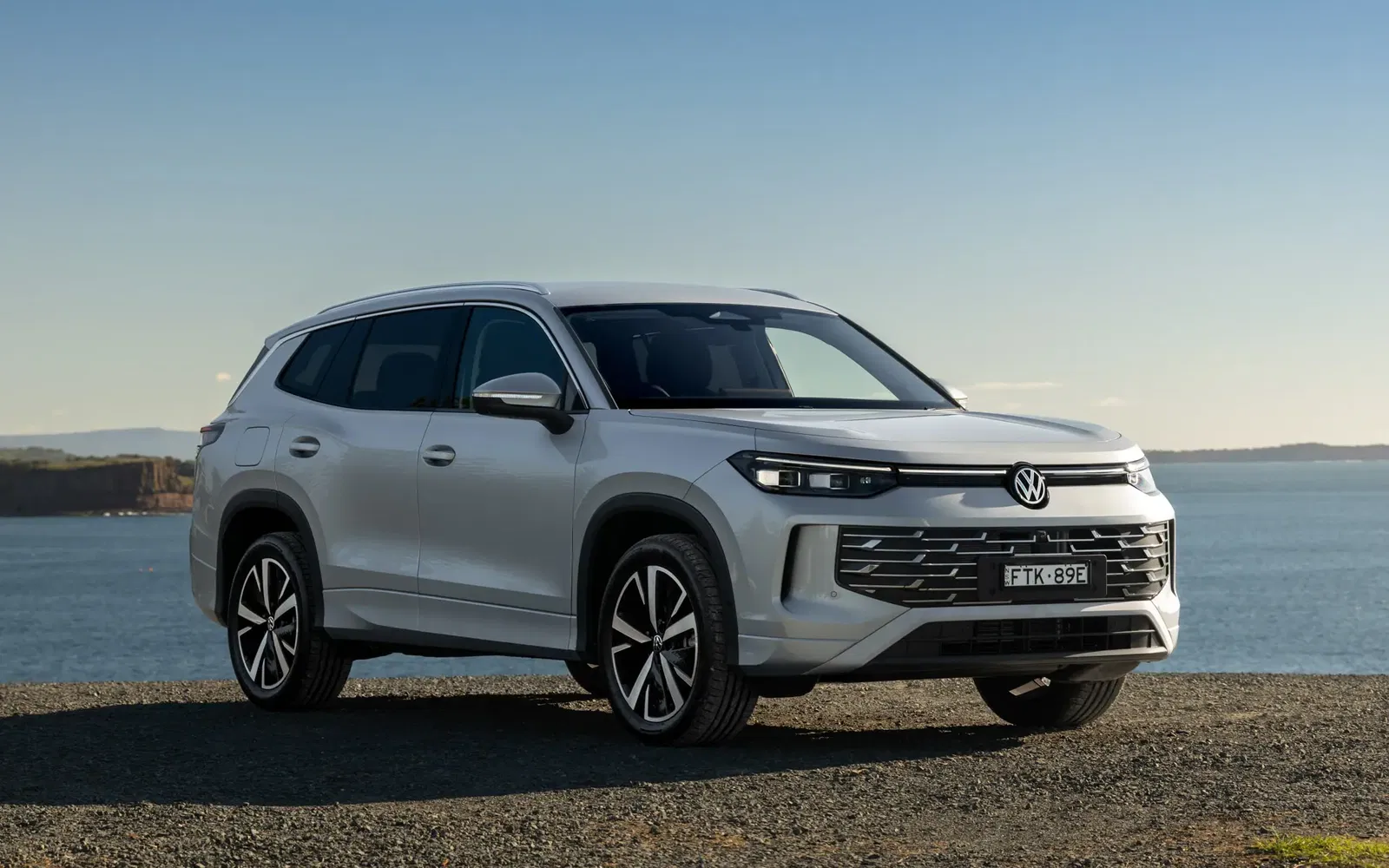
2025 Volkswagen Tayron Review
The Volkswagen Tayron has replaced the Tiguan Allspace, arriving in both seven and five-seat configurations. But what does VW’s latest SUV bring to the table?
A
UNGRADED

A
UNGRADED

What people are saying:
Pros
- Excellent driving dynamics with DCC equipped
- Great boot space
- Pleasant interior
Cons
- 110TSI feels down on power
- Slighty overreactive safety suite
- Servicing costs on the expensive side
The 2025 Volkswagen Tayron has arrived in both five-seat and seven-seat configurations, replacing the outgoing Tiguan Allspace and slotting into the brand's SUV lineup above the regular five-seat Tiguan and below the Touareg large SUV.
The Tayron is actually in its second generation, with the nameplate originating on a Chinese market-exclusive released in 2018.
However, the Tayron badge has now gone global, and it has a lot to prove in the Australian market, considering the car it replaces once accounted for over 40 per cent of local Tiguan sales.
But what does the new Tayron bring to the table? And how does it compare to its family-ferrying competitors?
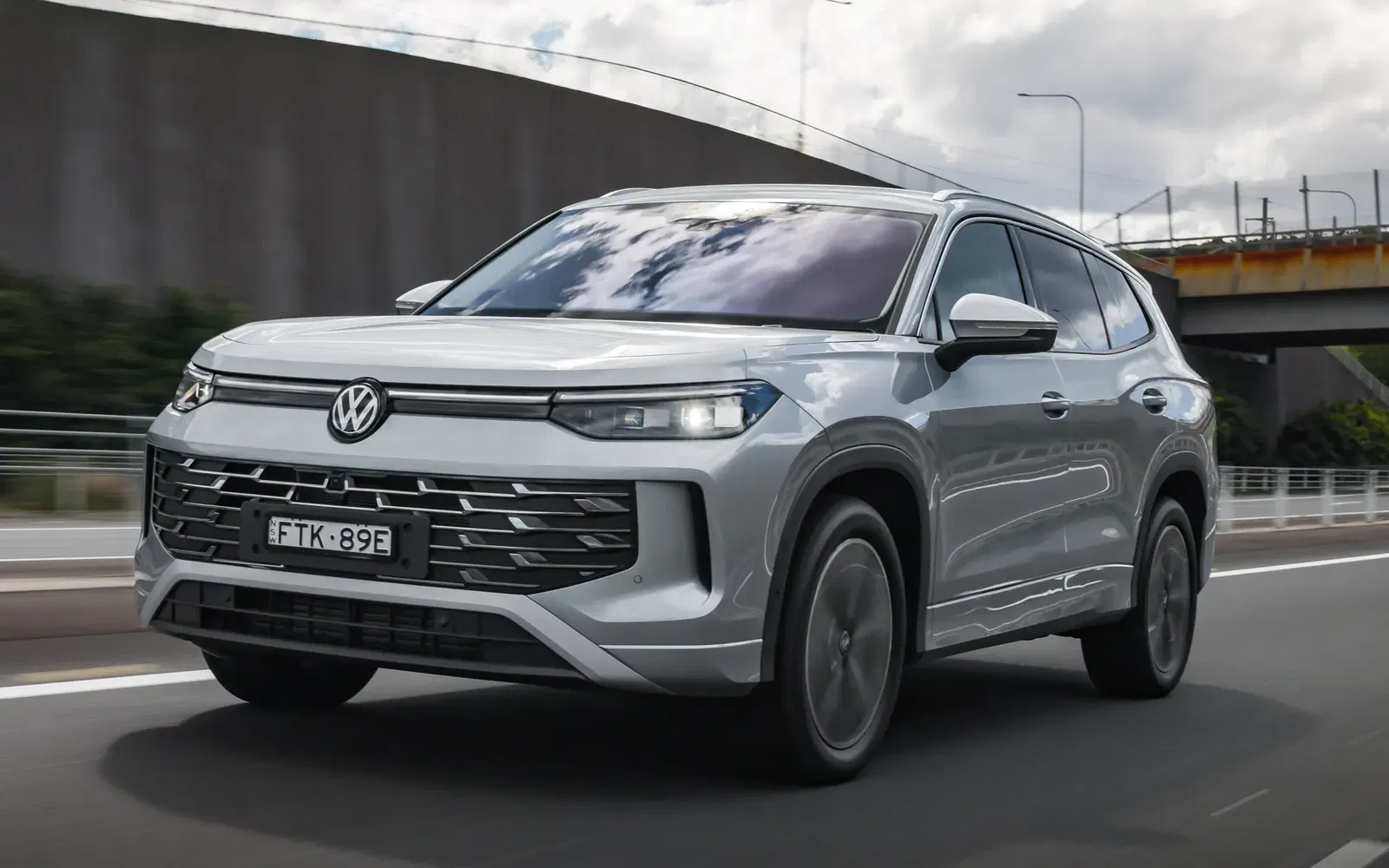
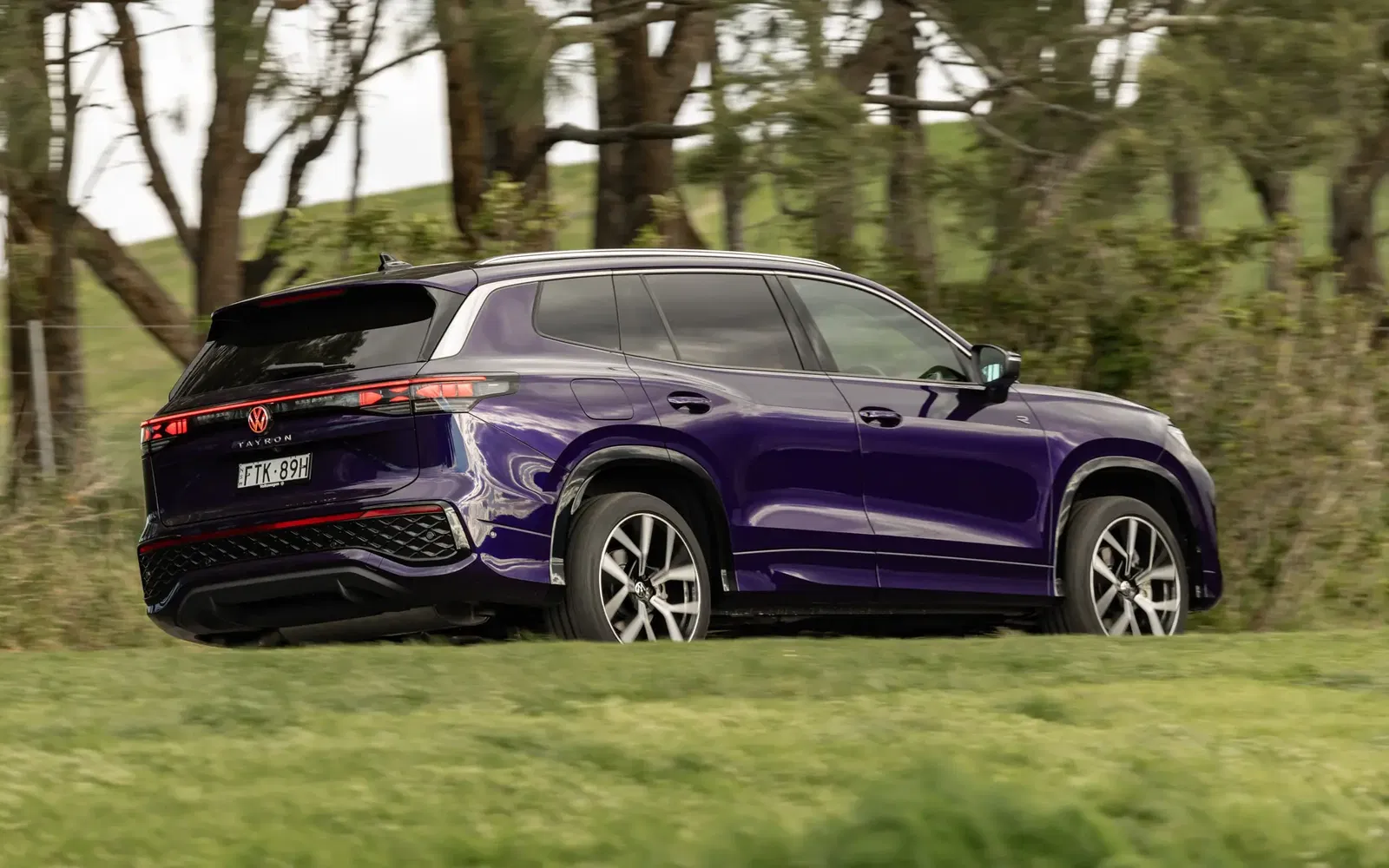
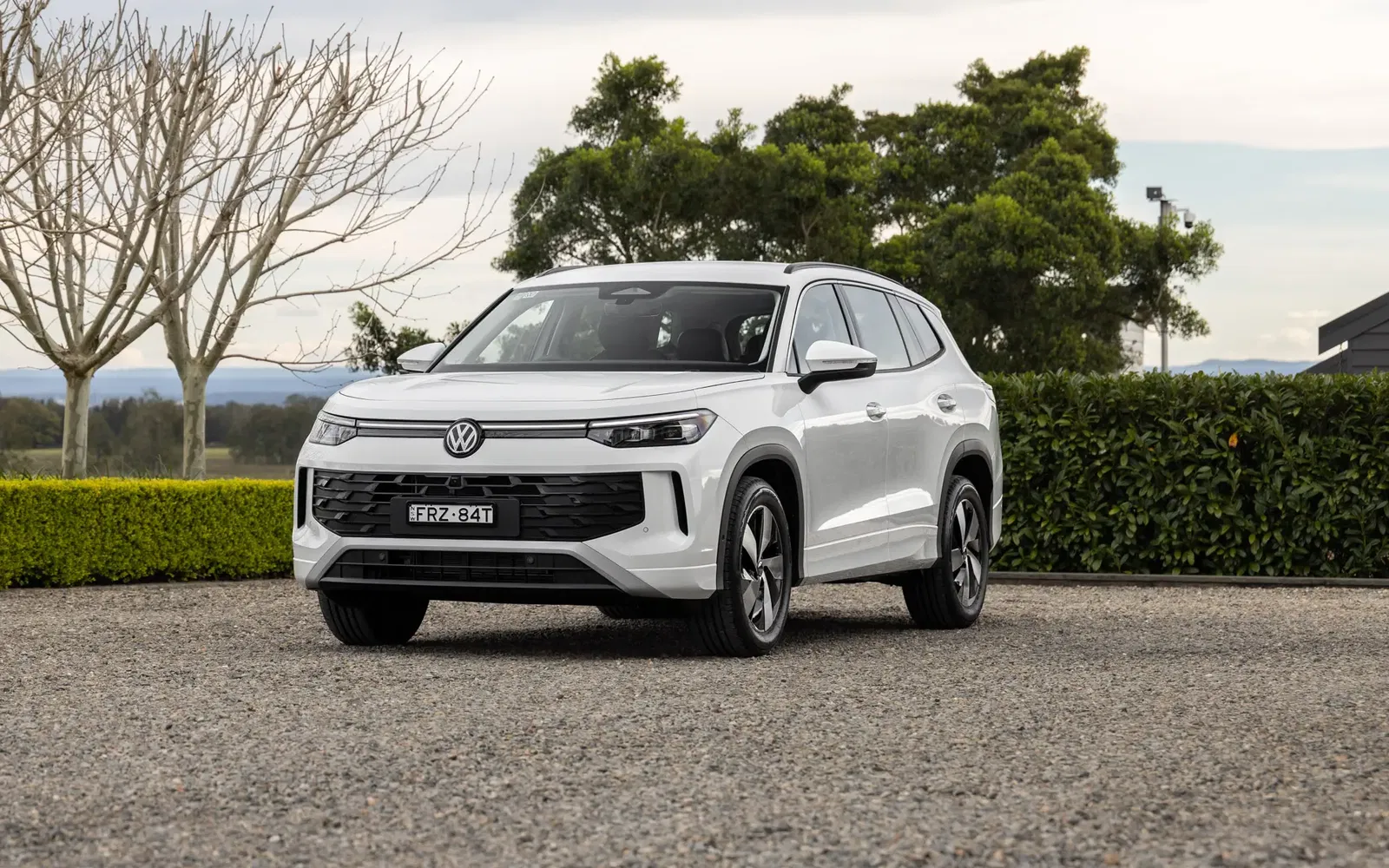
How much does the 2025 Volkswagen Tayron cost?
Prices for the 2025 Volkswagen Tayron start at $48,290 before on-road costs for the entry-level 110TSI Life variant. The 150TSI variant rises to $53,990 before on-road costs for the Life variant and $59,490 for the Elegance trim level. The range-topping 195TSI R-Line is priced at $73,490 before on-road costs.
Its pricing places it as a more premium option among seven-seat SUVs, priced higher than the vast majority of non-hybrid Nissan X-Trail and Mitsubishi Outlander variants, while the entry-level Tayron undercuts the base model Kia Sorento ($50,680 before on-roads) and Hyundai Santa Fe ($53,000 before on-road costs).
However, despite not currently offering a hybridised variant, the Tayron’s price range does overlap with the hybrid Nissan X-Trail (starting at $47,765 before on-roads), the PHEV Mitsubishi Outlander (starting at $57,290 before on-road costs), the hybrid Hyundai Santa Fe variants, and the mild hybrid Mazda CX-80 (starting at $54,950 before on-roads). However, the base Tayron does undercut the starting price of the non-hybrid Kia Sorento ($50,680 before on-roads)
While the Tayron is not class-leading in terms of price, it still represents viable value for an SUV of this size.
2025 Volkswagen Tayron Pricing Before On-Road Costs
- 110TSI life: $48,290
- 150TSI Life: $53,990
- 150TSI Elegance: $59,490
- 195TSI R-Line: $73,490
Options
- Sound & Vision package (150TSI Elegance): $4,200
- Heads-up display
- Harman Kardon sound system
- 15-inch infotainment screen
- Voice command
- HD Matrix LED headlights
- LED taillights w/ 3D animation and dynamic indicators
- Black style pack (R-Line): $1,500
- 20-inch 'York alloy wheels
- Gloss black exterior trim
- Black/dark anodised interior trim
- Panoramic sunroof (Elegance, R-Line): $2,100
Presence in the Ways that Matter
The Tayron’s exterior styling is relatively reserved while remaining sleek and modern, but has enough presence in the ways that matter.
The Tayron uses its lighting signature to great effect, with both the front and rear lightbar contributing to its modern look, serving as very complementary elements.
The difference between trim levels is perhaps most noticeable in the front fascia design. The Elegance trim level adds just the right amount of chrome to the grille to enhance the aesthetics over the entry-level Life variant. The R-Line has a more aggressive grille and pronounced intakes.
Like many seven-seat SUVs, the Tayron’s shape is quite wagon-like, which I feel contributes to a more prominent silhouette and a stronger aesthetic overall.
By the standards of modern cars, there’s very little about the Tayron’s exterior design that I find shouty or particularly polarising. However, while it’s understated, it’s still effective and very tasteful.
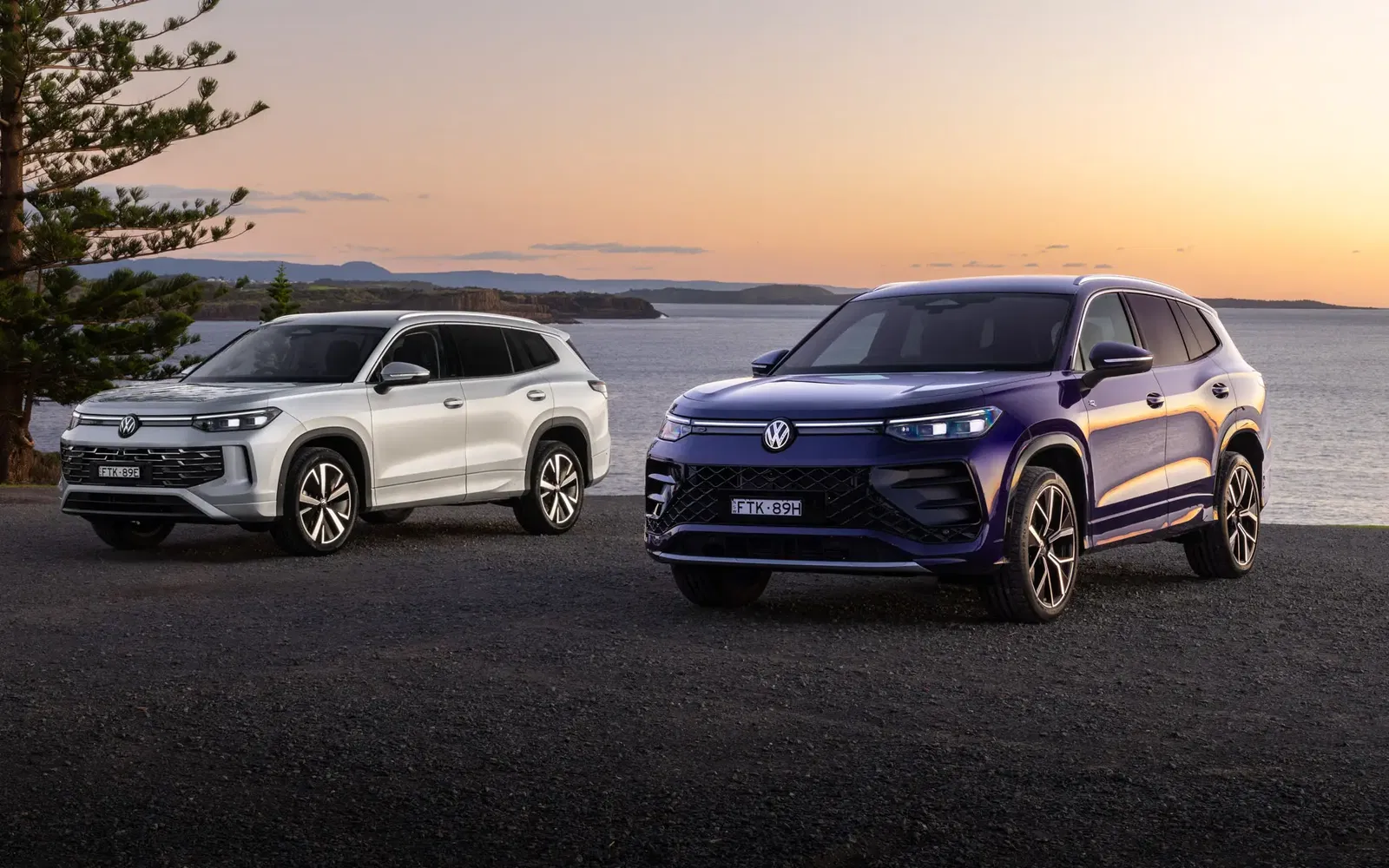
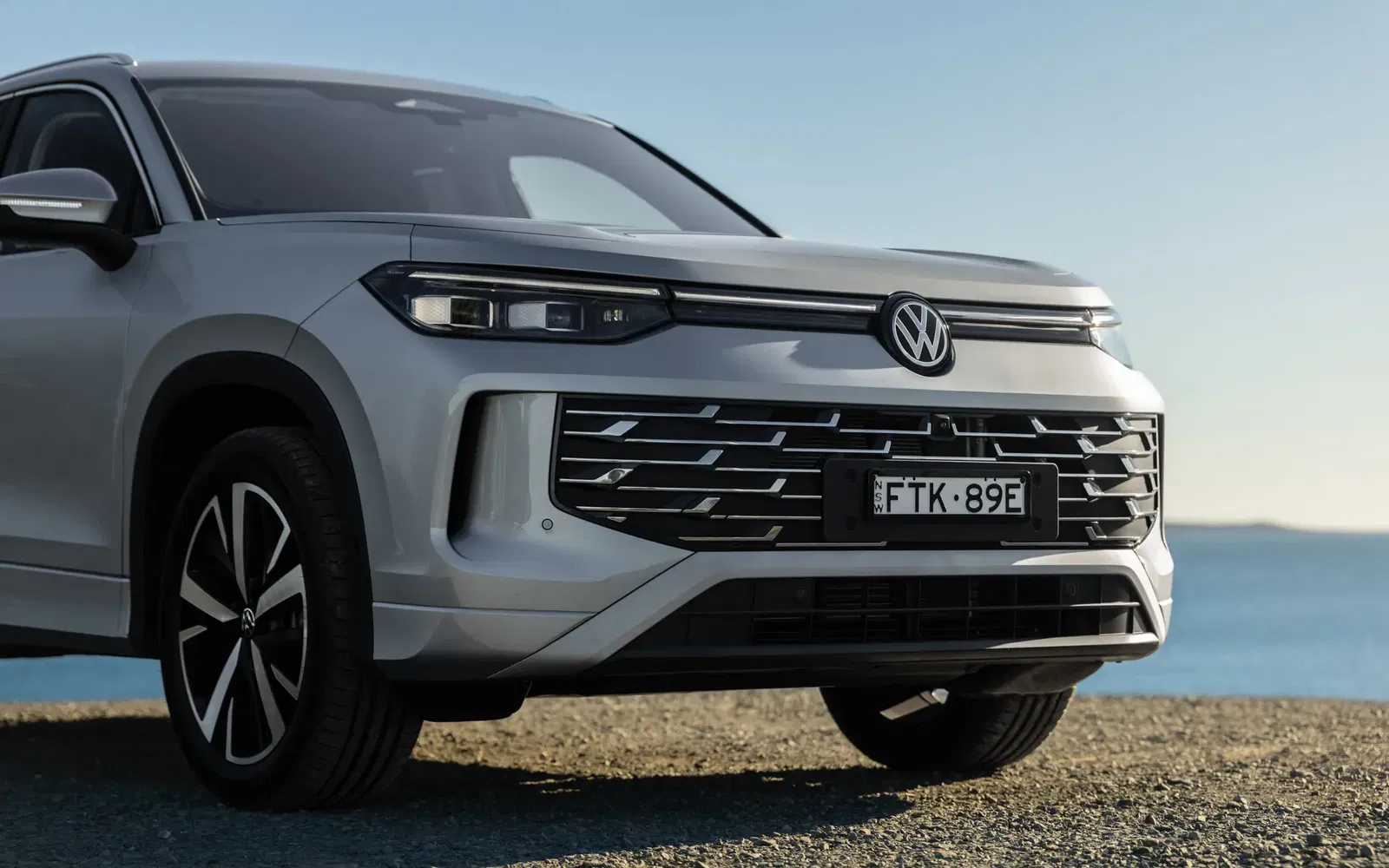
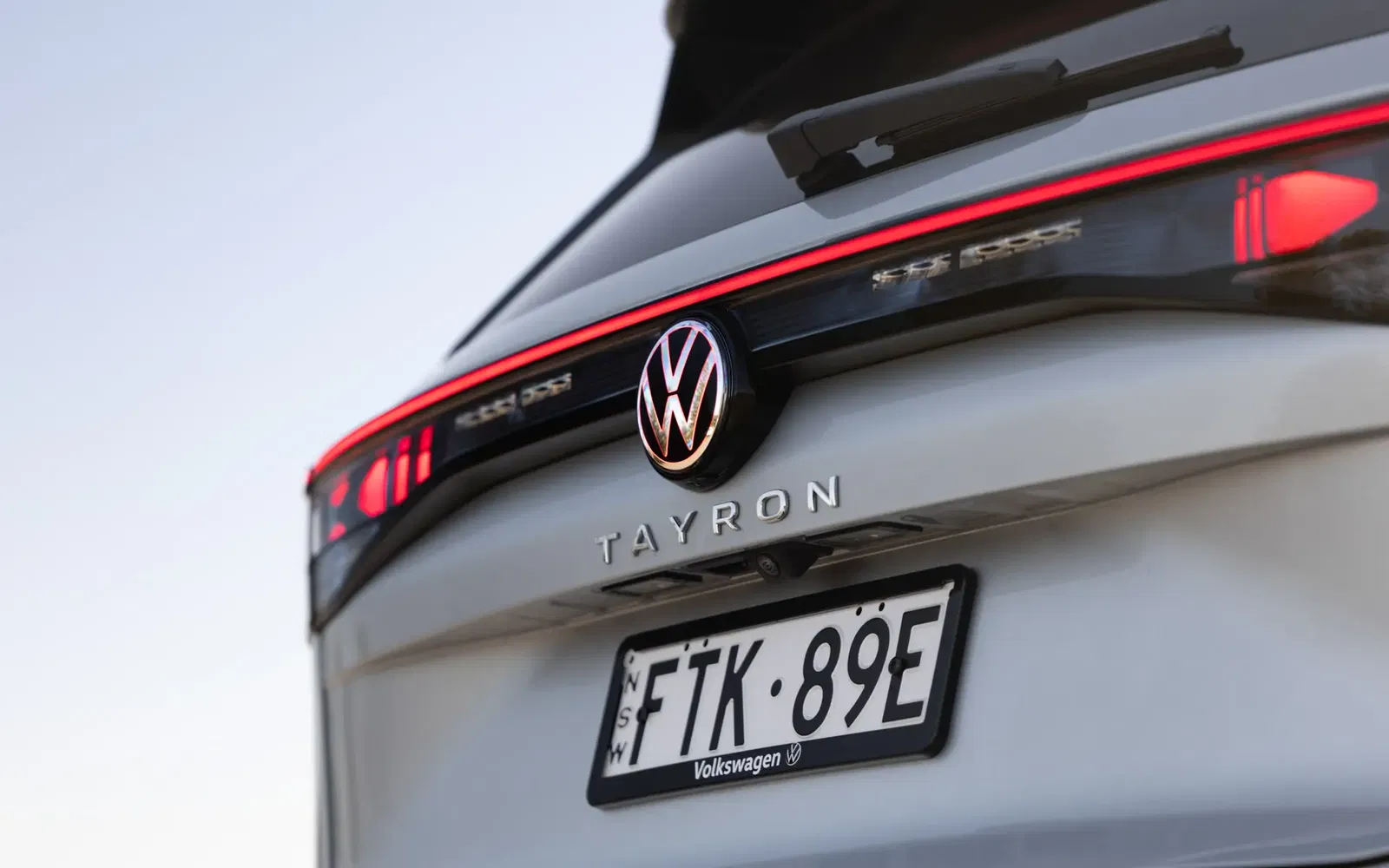
Attractive on the Inside
The Volkswagen Tayron’s front row is certainly a visual spectacle, with the enormous 12.9-inch (or optional 15-inch display) infotainment screen, the ambient lighting with 10 or 30 selectable colours integrated into the dashboard, decorative inserts and doors (depending on the trim level), and the funky three-in-one drive mode selector, volume control and “atmosphere” selector.
For the large part, the material choices feel of a high standard, particularly in the Elegance trim level, with the addition of leather-appointed seats in the Elegance trim level. However, some of the trim does feel slightly plasticy, especially the wing-shaped piece running the width of the dashboard.
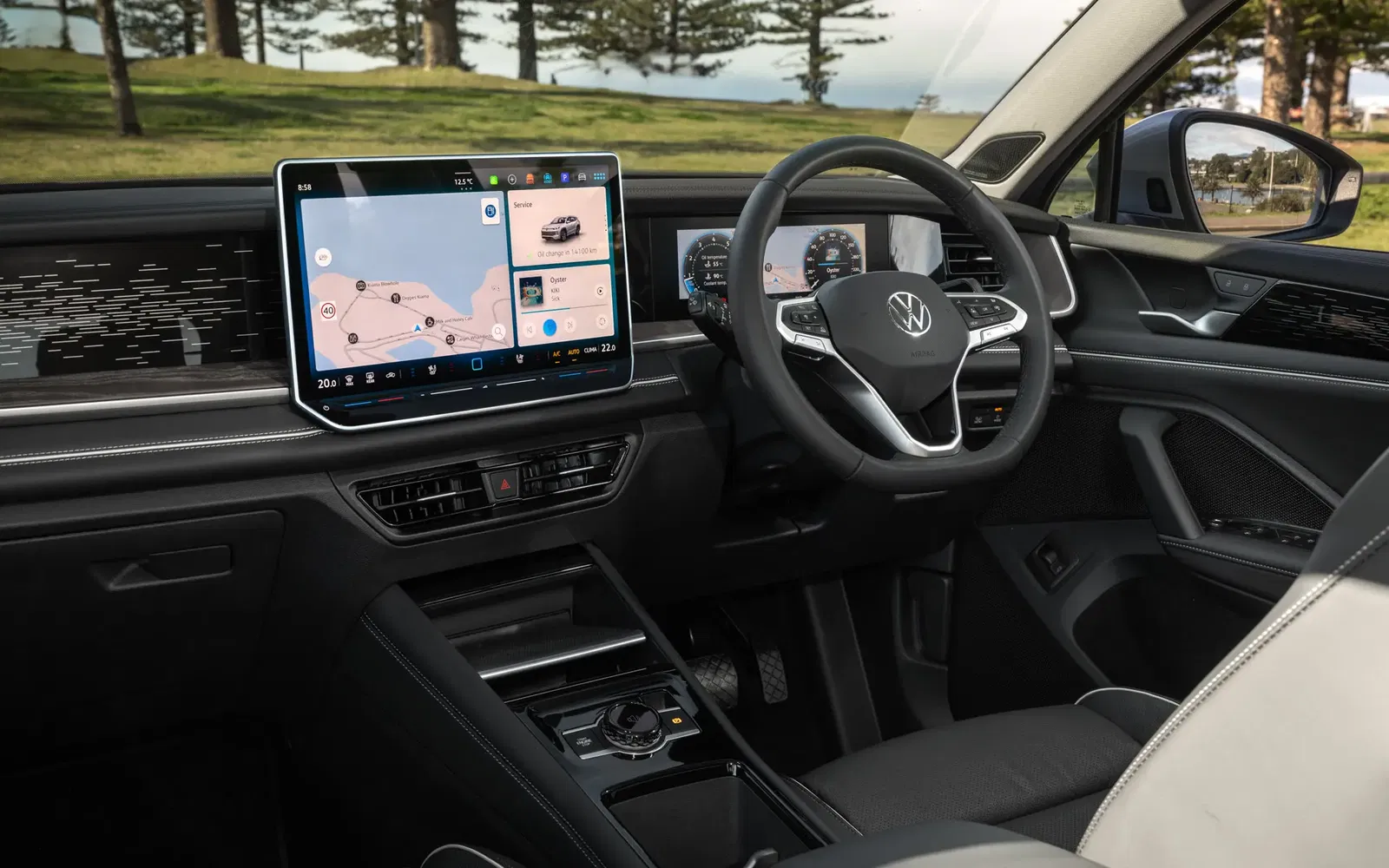
Finer air conditioning controls are largely handled within the infotainment system; however, there are touch controls on the dashboard that work intuitively with the Auto setting enabled. There is also a touch button for the volume; however, this is best handled through the steering wheel controls instead.
The infotainment system is relatively easy to use as well, once you get the hang of the system, with relevant functions and menus accessible within one or two clicks. The three-in-one dial is also easy to operate while on the move.
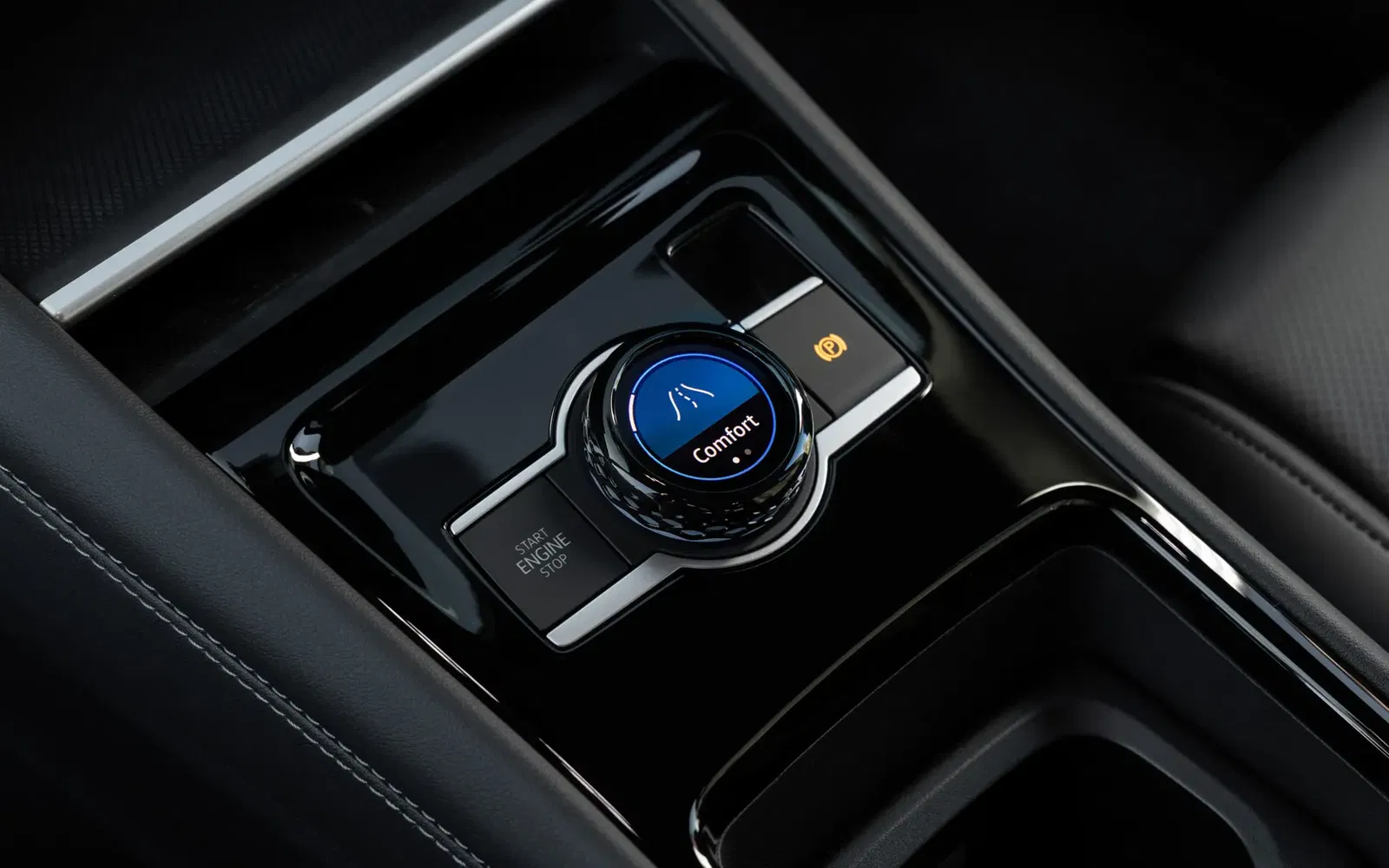
Both the cloth seats offered in the Life variants and the leather seats offered in the Elegance and R-Line are comfortable, supportive and easy to adjust.
The expected charging options are present, including two USB-C ports andwireless charging for two phones.
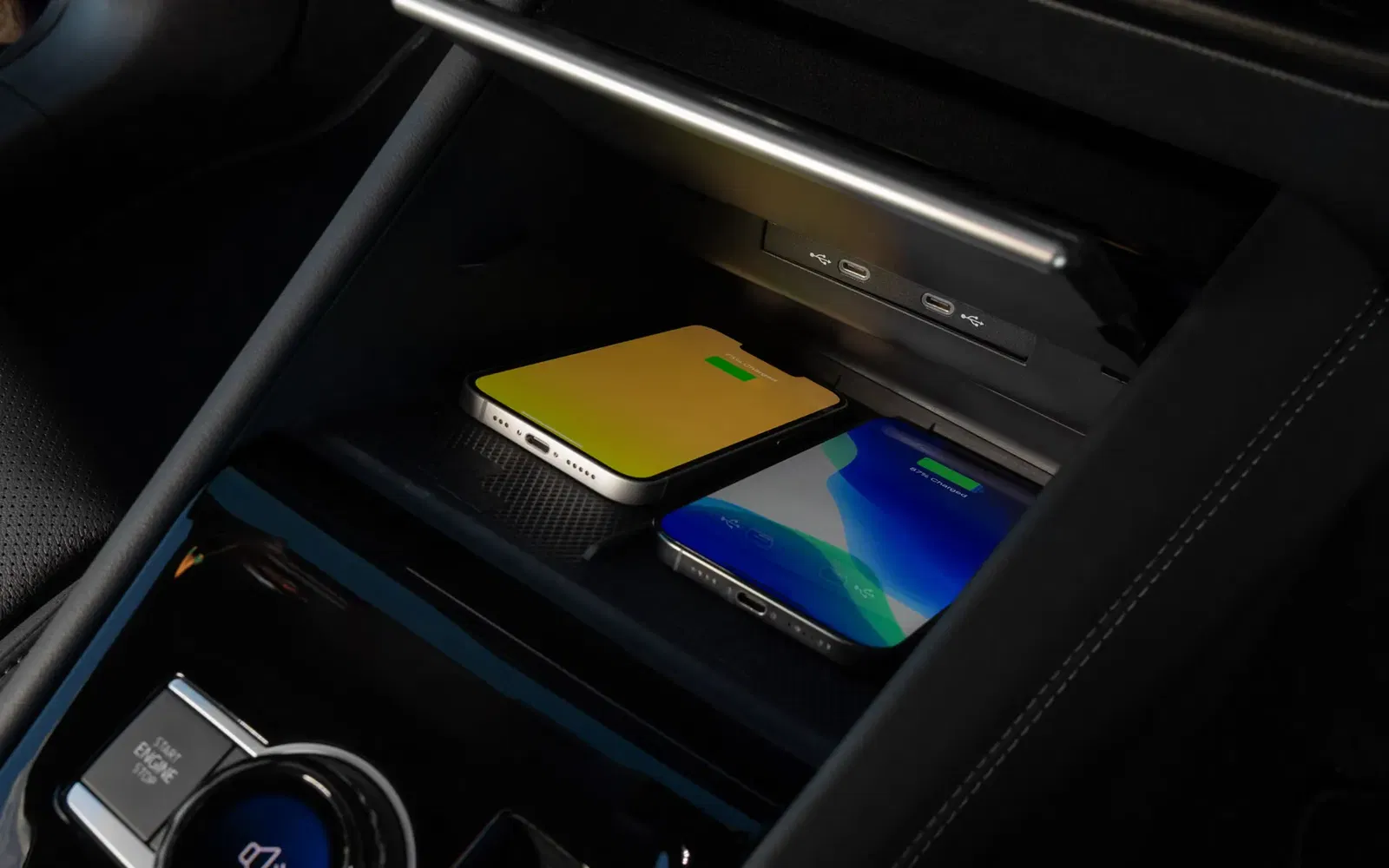
While the centre console armrest storage is far from the deepest I’ve seen, storage in the front row is certainly ample.
Overall, the front row of the Volkswagen Tayron is comfortable, functional, high-quality for the most part, and certainly a visual spectacle.
Pleasant Amenities
The Tayron sports solid space in the second row with comfortable levels of headroom, knee room and shoulder room.
It has some excellent amenities too. As you’d expect, there are two USB-C ports and rear air vents, with largely intuitive controls save for the odd unresponsiveness. The centre console armrest has two cupholders, a tablet holder and massive amounts of surface area, allowing both outboard passengers to rest their arms comfortably without encroaching on each other’s personal space. The rear window blinds are also a pleasant touch.
The rear seats are also capable of sliding backwards and forwards. While this mainly helps with third-row access, it certainly has its potential use for added passenger comfort.
Each front seat has two seat-back pockets, which I found very useful for accommodating smaller items.
Like the front row, the material quality is largely high-quality apart from the odd plasticy surface. The leather seats of the Elegance trim level certainly enhance the experience.
There’s a small hump in the middle of the floor, compromising comfort for the middle seat passenger slightly; however, it’s far from the largest or most offensive that I’ve seen.
Ultimately, the second row of the Tayron is comfortable, spacious, and solidly equipped.
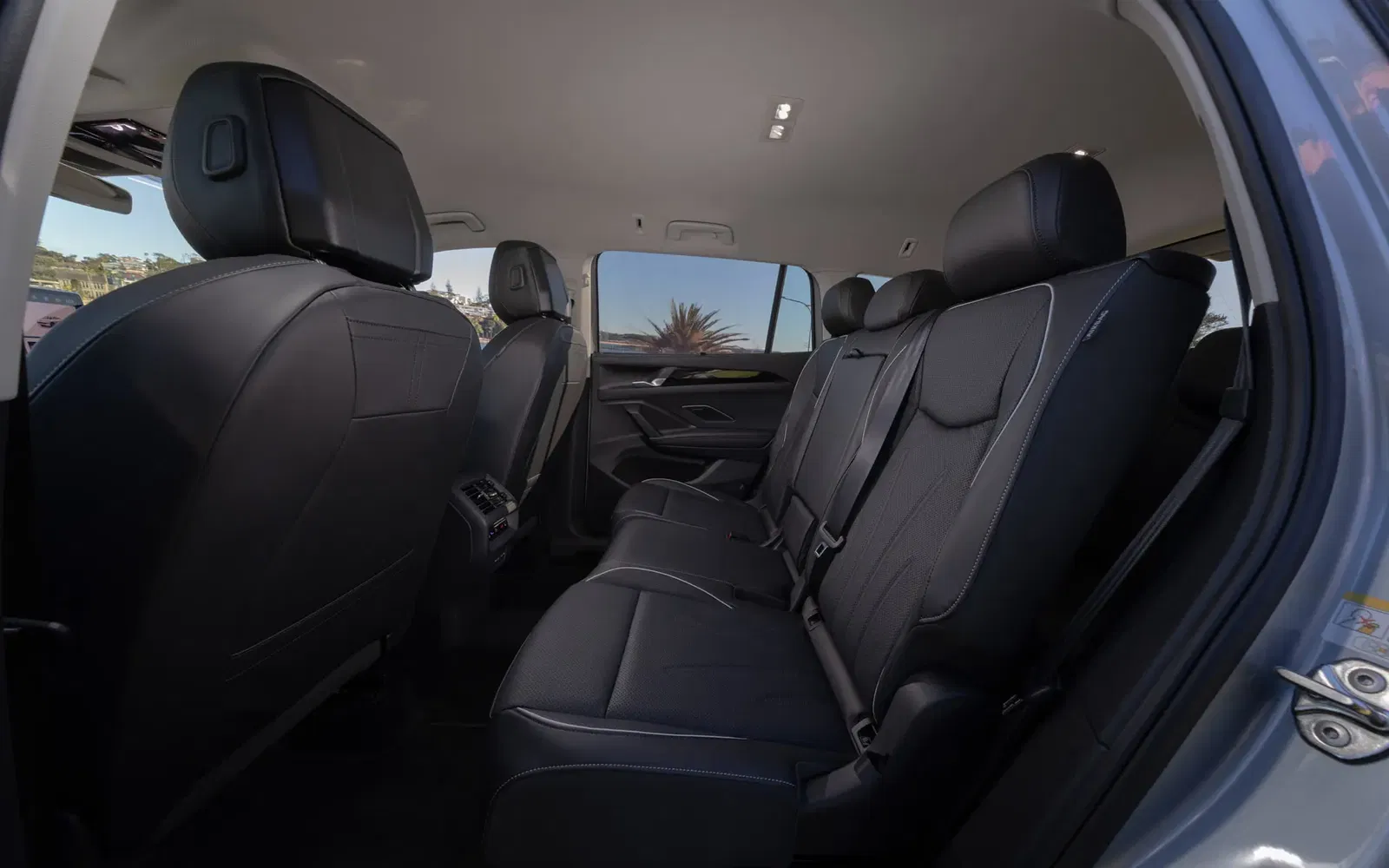
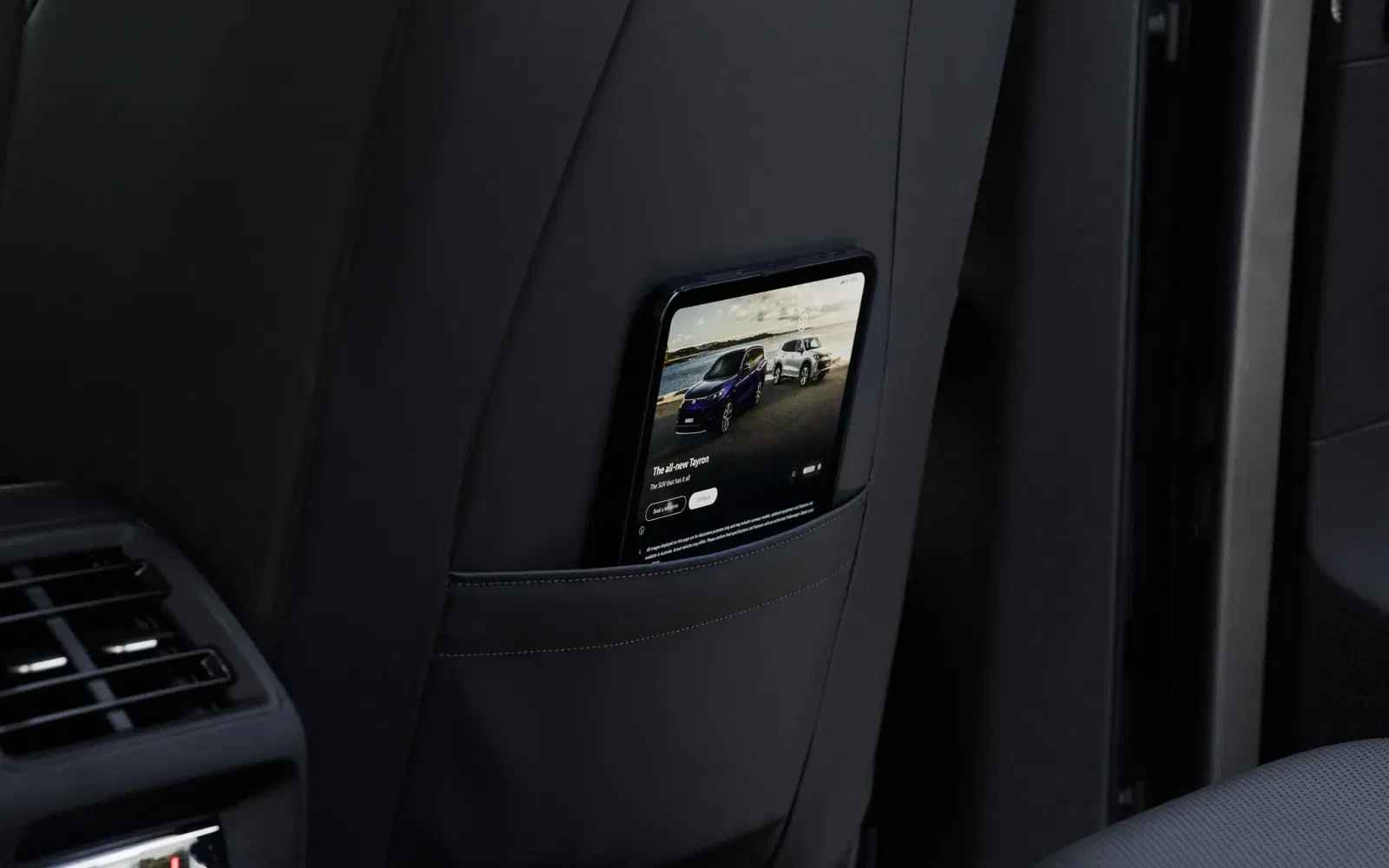
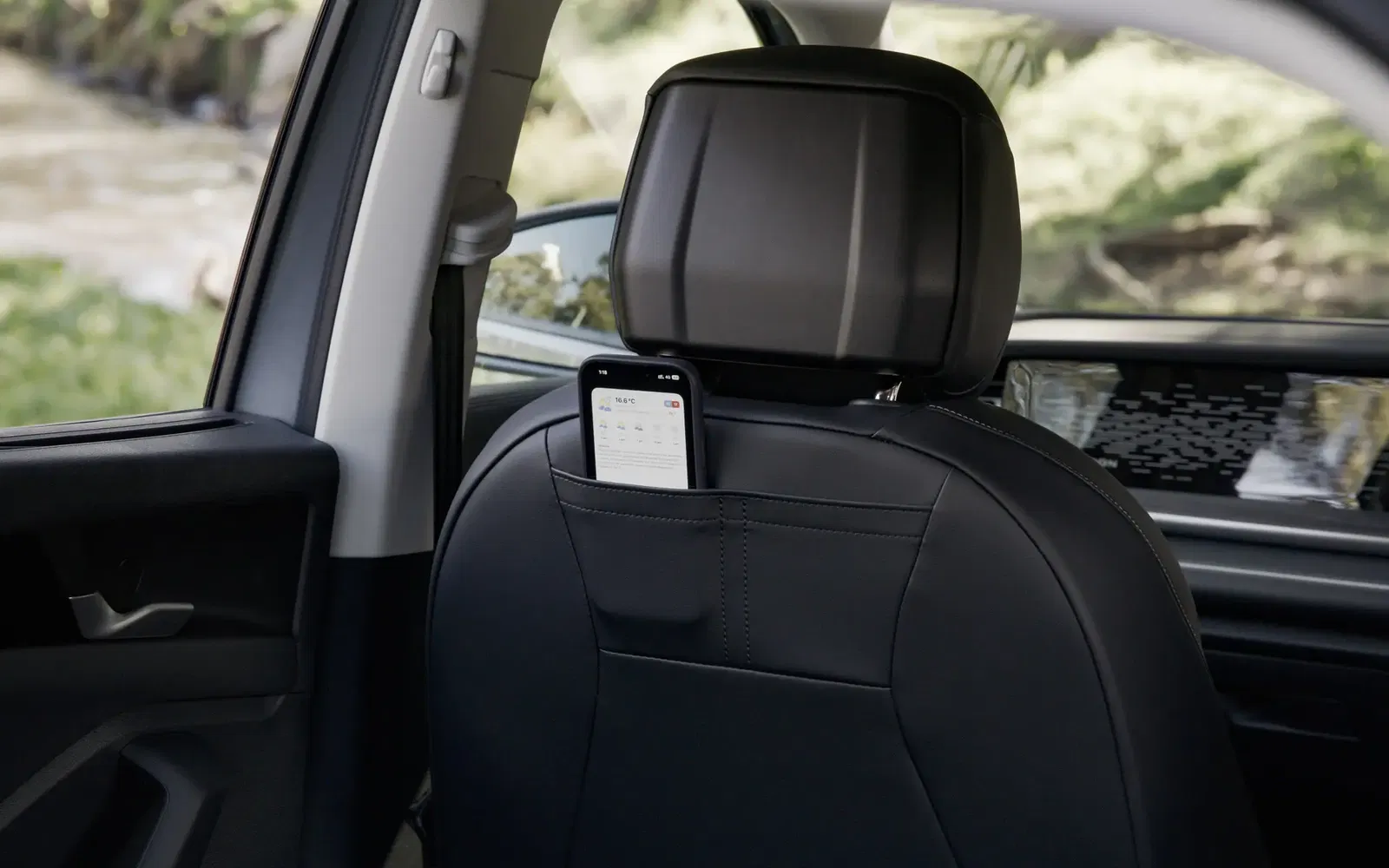
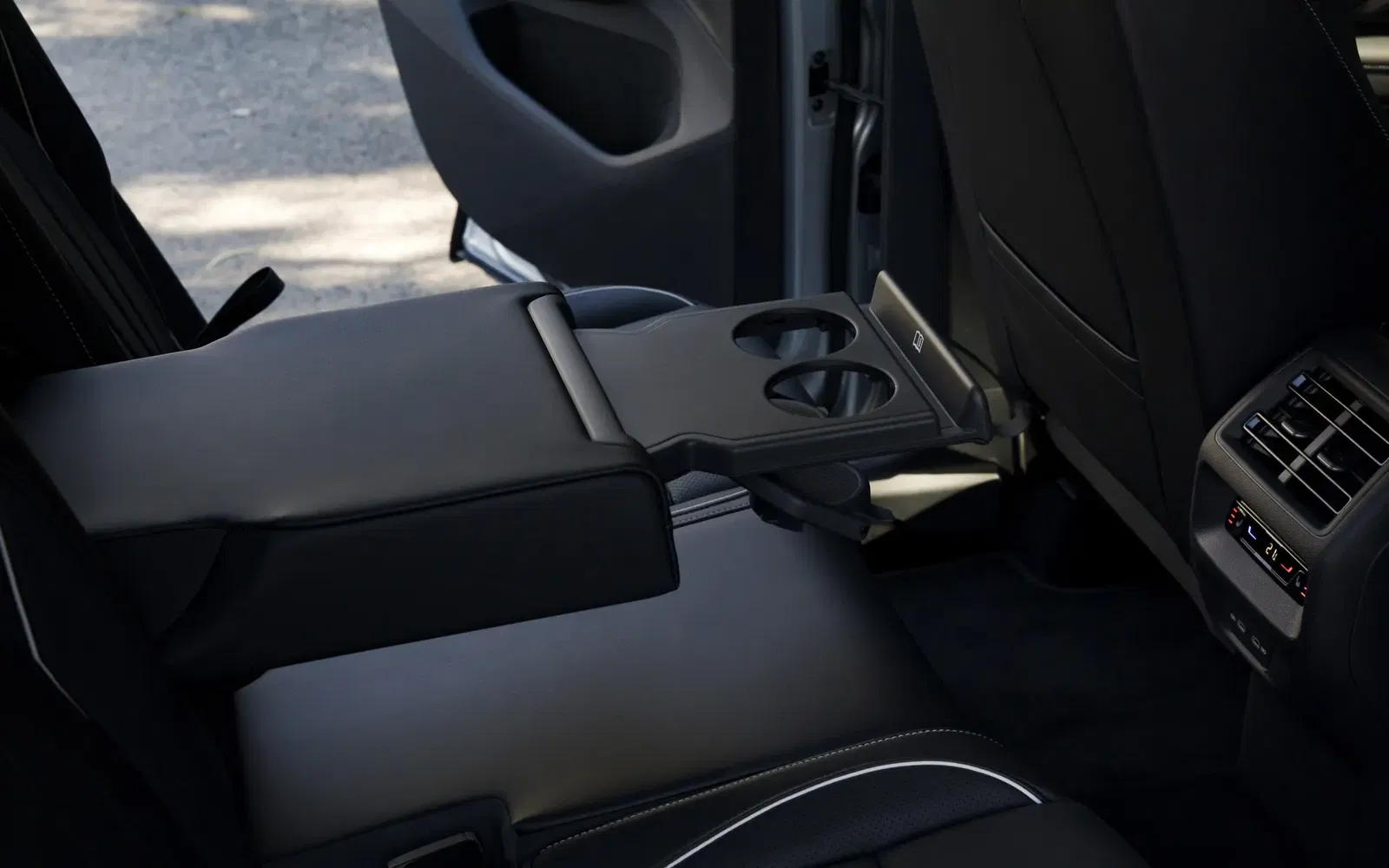
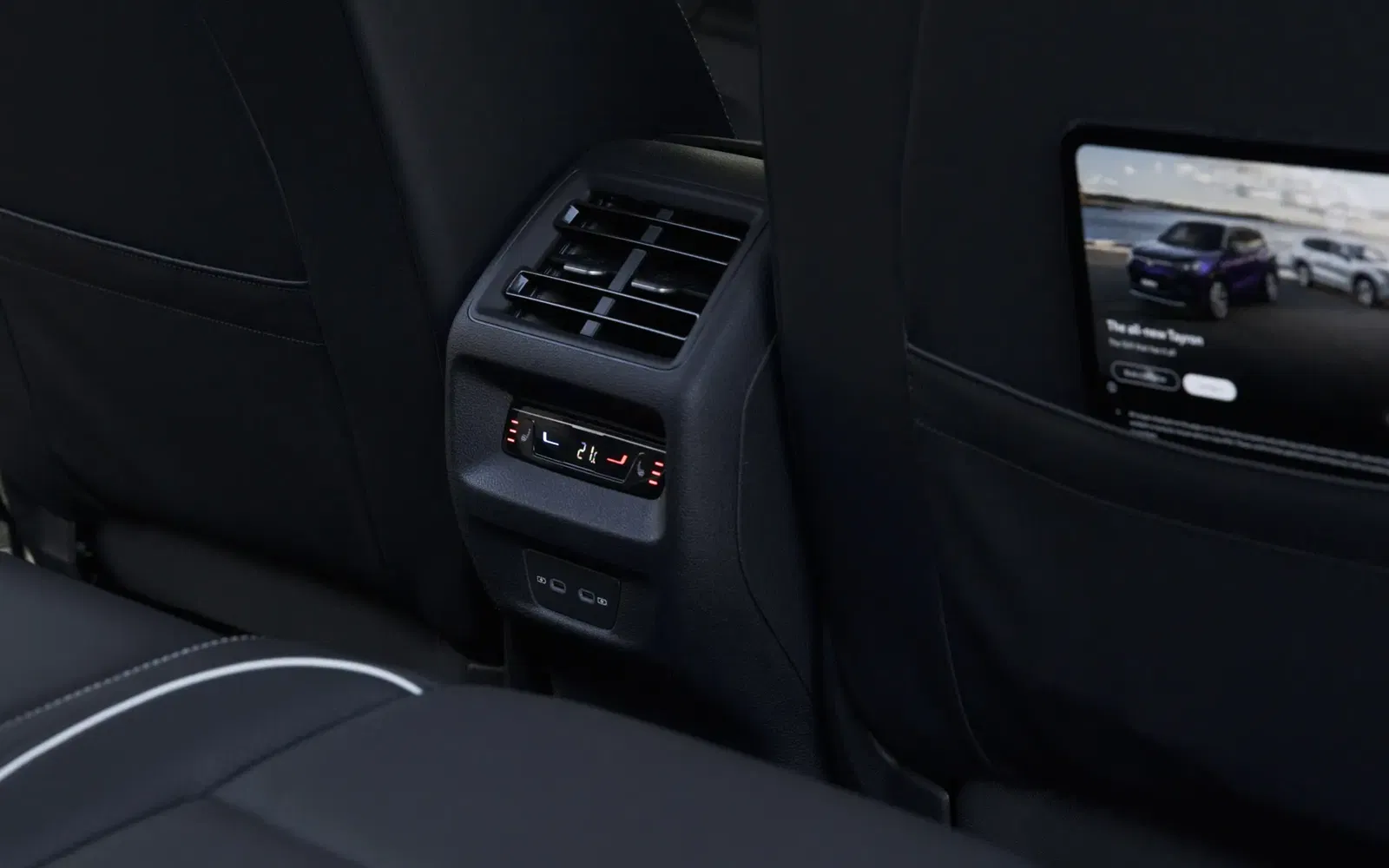
Does the Job
It should be noted that not all variants of the Tayron have a third row of seats, with the 150TSI life offered as a five-seater. However, for variants that do have them, the two rear-most seats offer enough space for young kids, and possibly adults on shorter journeys, should the need arise.
Naturally, amenities aren’t as extensive in the third row as they are in the second. However, the two rear-seat passengers haven’t been completely forgotten about, with adjustable headrests, accessory hooks and useful side storage compartments.
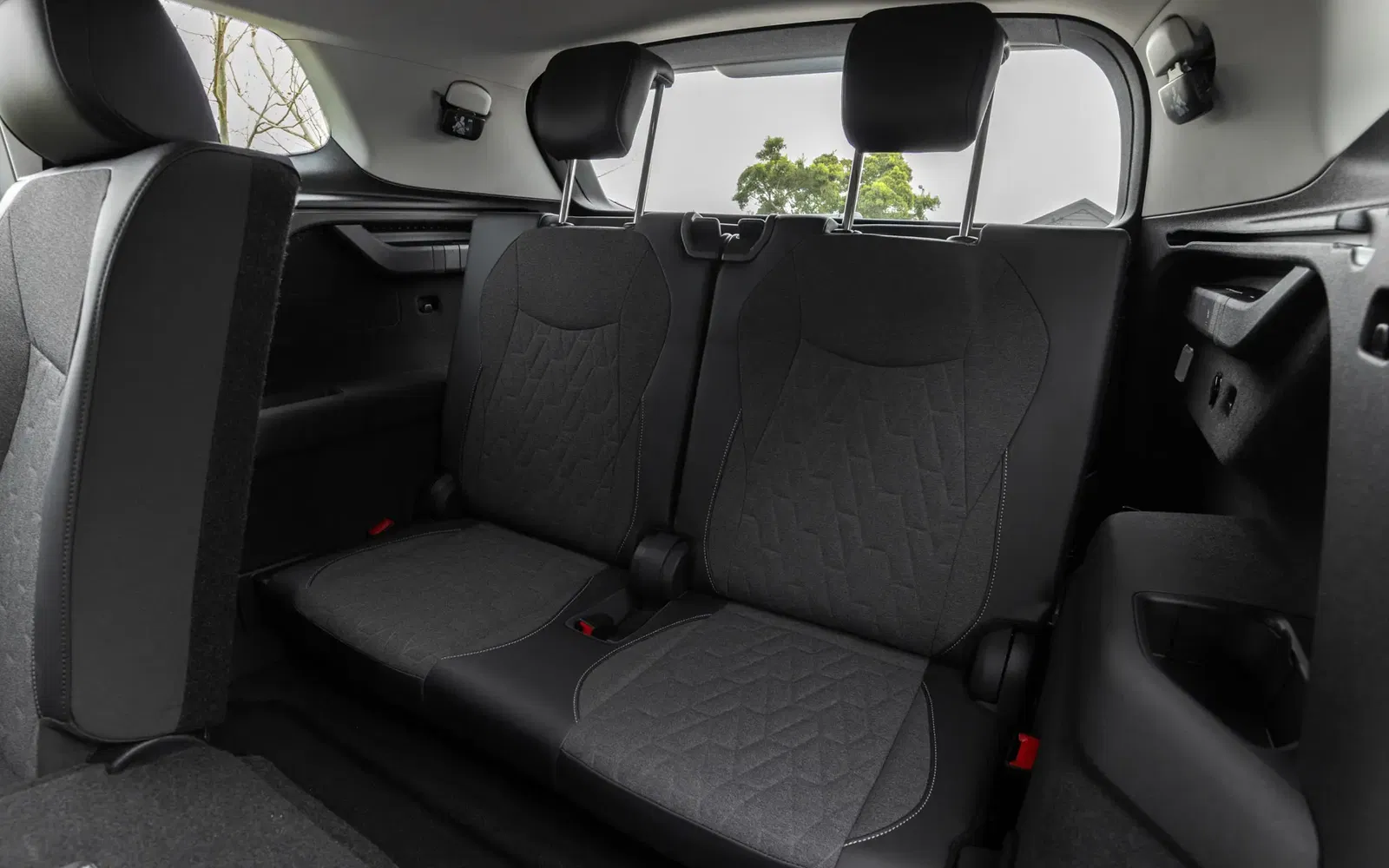
Among the Best
The seven-seat versions of the Volkswagen Tayron have 345 litres of boot space with all seven seats up, growing to 850 litres with the third row folded and 1,905 litres with the second row folded, a capacity that places among the top of its class.
The five-seat variant sports 885 litres of space behind the second row, extending to a massive 2,090 litres once folded.
Regardless of the variant, the Volkswagen Tayron offers immensely impressive boot space.
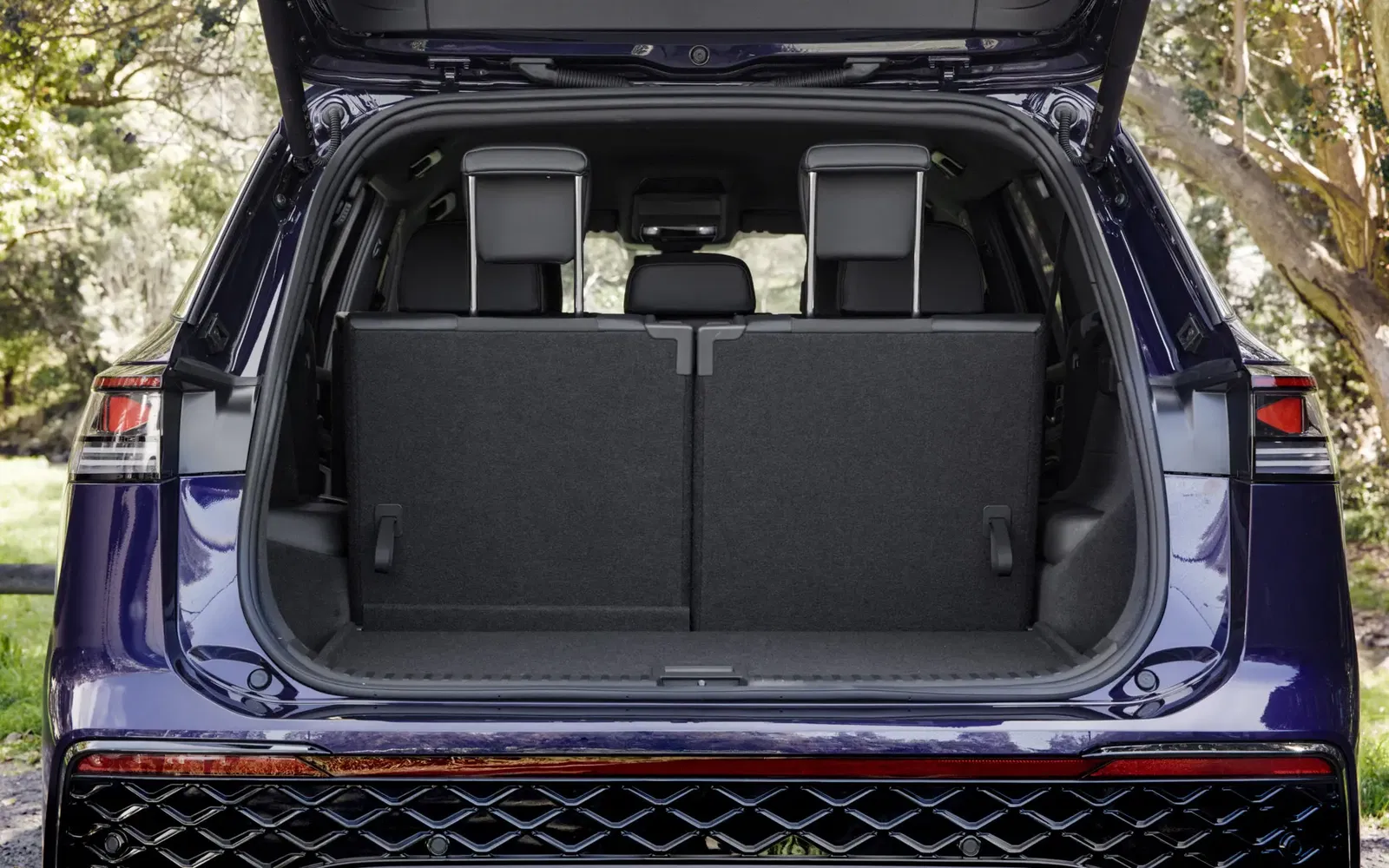
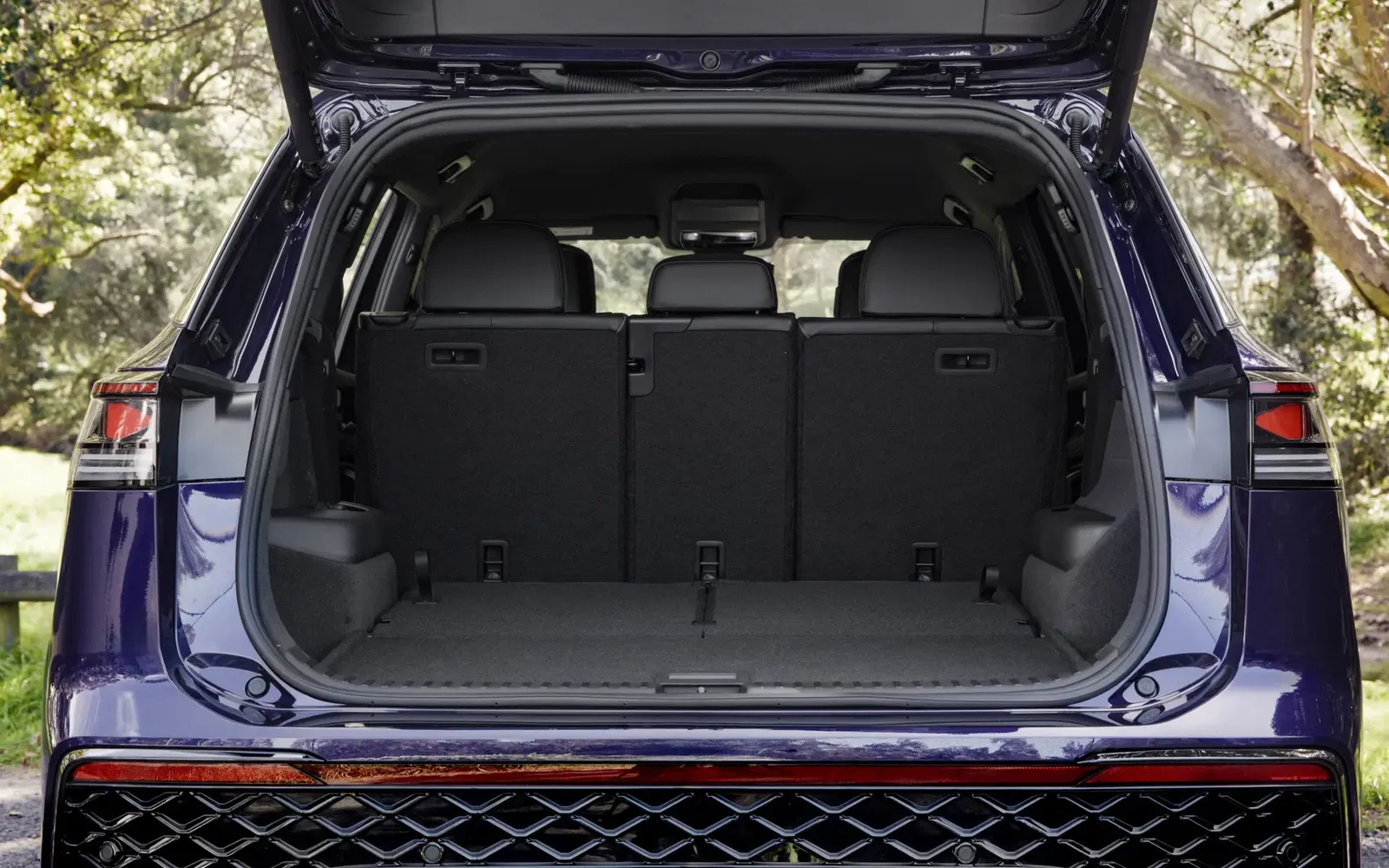
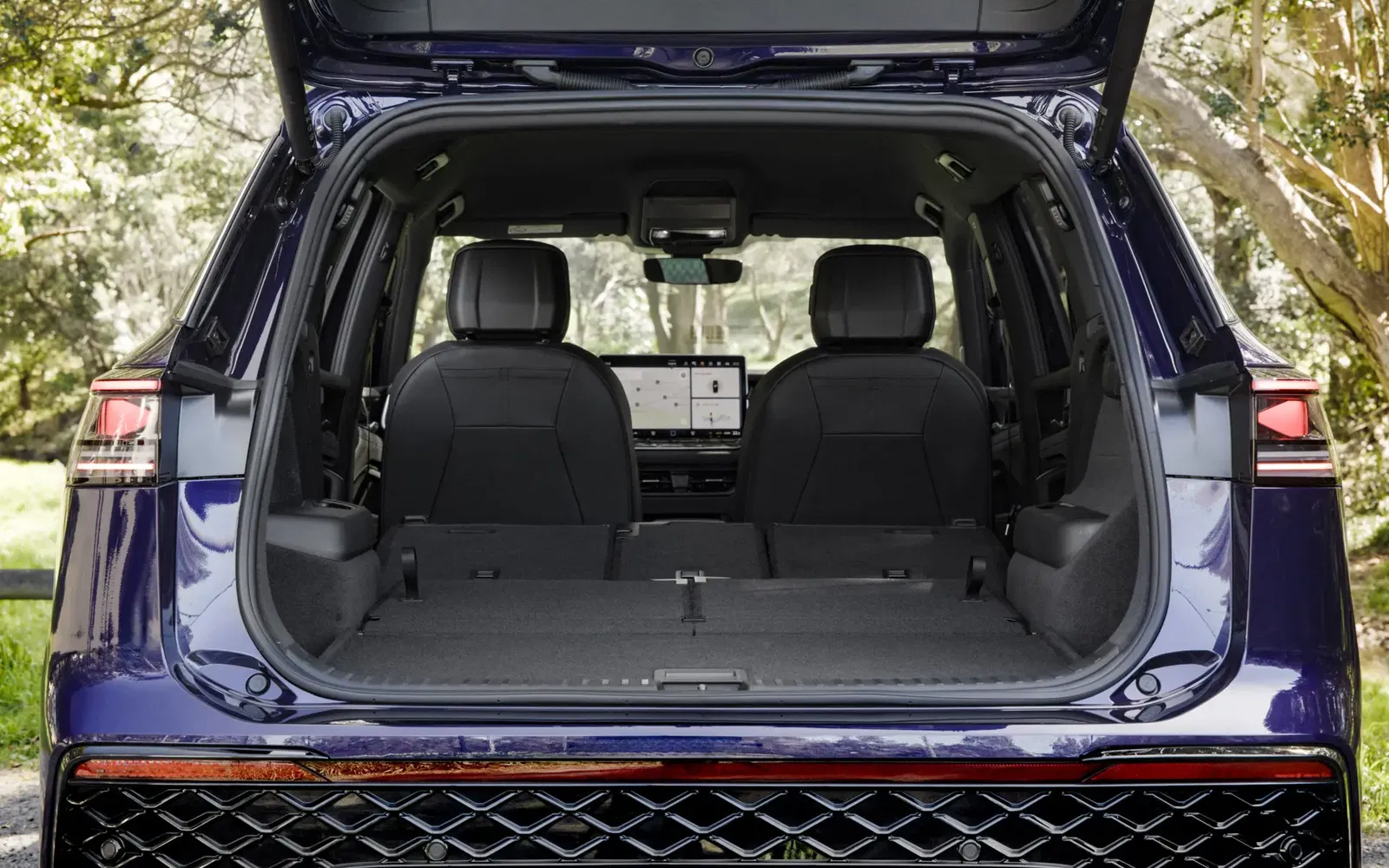
The 2.0-litres re up to the Task
Four powertrains are offered for the Volkswagen Tayron, all of which are paired with a seven-speed DSG.
The entry-grade, front-wheel drive, 110TSI Life features a 1.4-litre four-cylinder petrol engine, producing 110kW and 250Nm. Combined fuel consumption is a claimed 7.6 litres per 100km, although my time with the 110TSI was spent on twisting backroads, making it difficult to get a representative real-world fuel number. While the 110TSI is effective enough as a propulsion device, it does feel slightly underpowered.
The 150TSI increases the displacement to 2.0 litres and adds all-wheel drive. Immediately, it feels like it has enough grunt for the occasion, producing 150kW and 320Nm, and achieves 0-100km/h in 7.4 seconds. The 150 TSI roughly matches its claimed combined fuel economy figure of 7.4 litres per 100km, with real-world numbers generally sitting between 7.1 and 8.5 litres per 100km.
The throttle and transmission are responsive in both the 110TSI and 150TSI, with the former acting reacting and shifting quickly both automatically and manually using the paddle shifters.
The 195TSI used in the top-spec R-Line ups the output to 195kW and 400Nm, achieving 0-100km/h in 6.1 seconds. The claimed combined fuel economy figure is 6.1 litres per 100km.
However, the Tayron’s power units aren’t class-leading, with the base-model Kia Sorento, for instance, producing more power and torque than even the top-spec R-Line. While plug-in hybrid variants are on the way, the Tayron’s current engine line-up also can’t match the output figures of the similarly priced mild hybrid Mazda CX-80 and Hyundai Santa Fe hybrid variants.
Even still, in the 150TSI at least, I didn’t find myself wanting more performance. While it's unlikely to win any drag races against some of its key rivals, the 2.0-litre four-cylinder is a more than suitable powertrain for an SUV of this size.
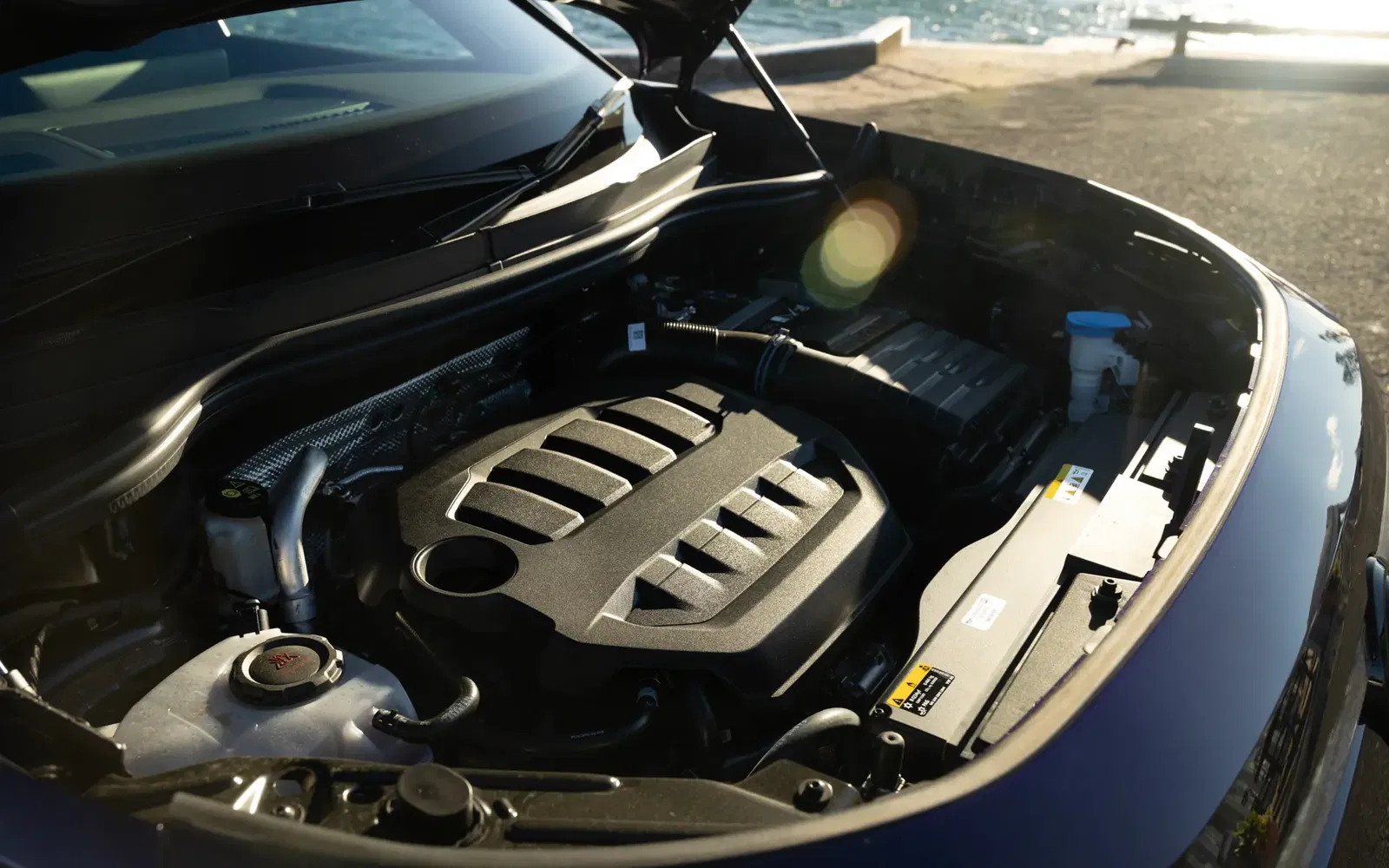
DCC for Me!
The majority of my drive time with the Tayron was spent behind the wheel of a 110TSI and a 150TSI – each in base-level Life trim – on the twisting roads around Berry, NSW.
The driving experience of the 110TSI was acceptable but not necessarily exceptional. Dynamically, it’s what you’d expect from a large family SUV, competent enough to hold on when the going gets twisty, but it’s not what I’d call fun to drive. The ride is also good but not silky smooth, unable to quite iron out the harsh surface quality of the area.
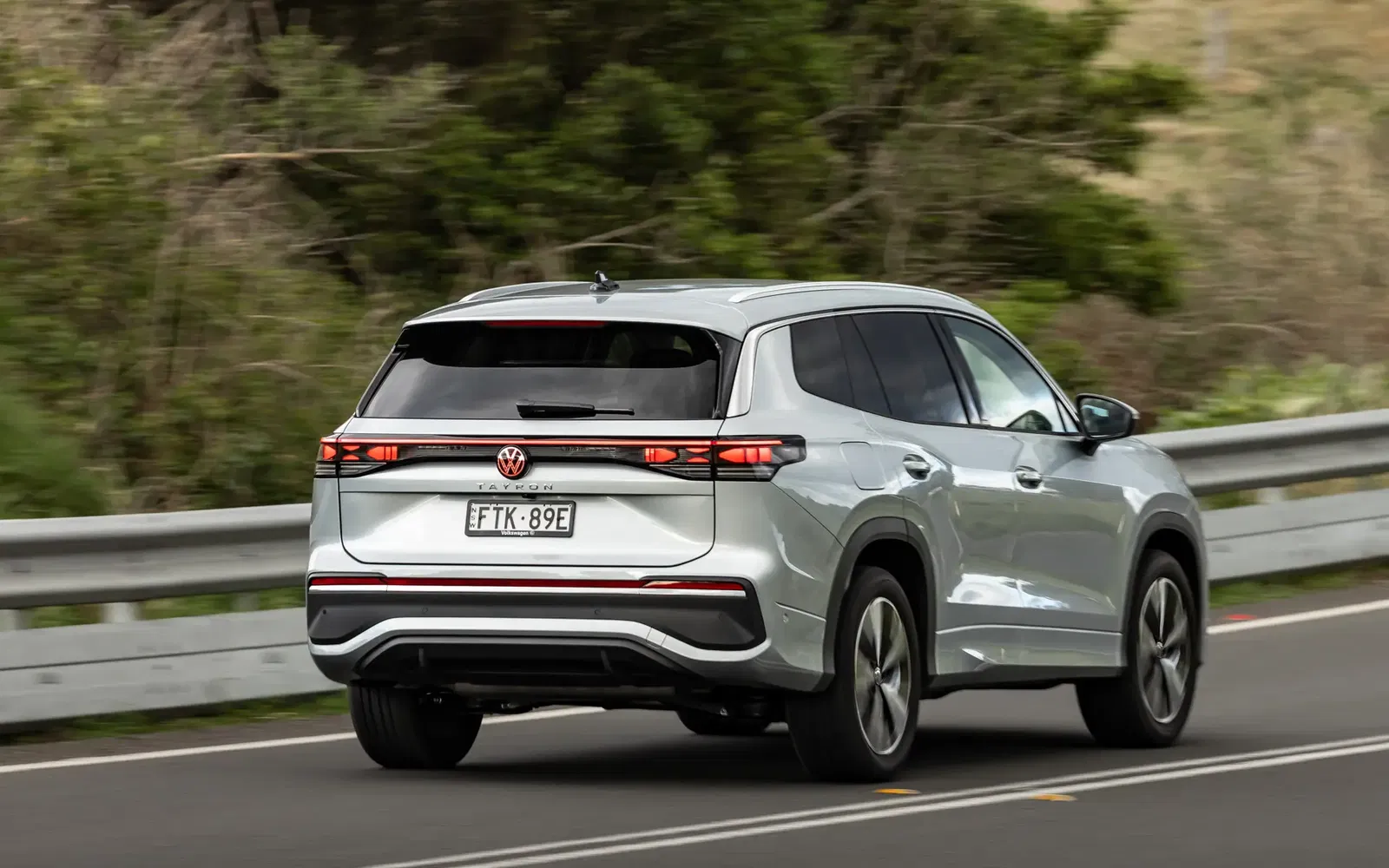
However, it’s a different story in the 150TSI, primarily due to the addition of the Volkswagen group’s Dynamic Chassis Control (DCC) Pro adaptive suspension system, with an immediately noticeable improvement in both ride and handling.
Bumps that were evident in the 110TSI were largely deleted by the 150TSI. It’s not perfect, with the harsher bumps still evident, but the Tayron was still very comfortable. It also corners remarkably flat and feels incredibly composed for a vehicle of its size.
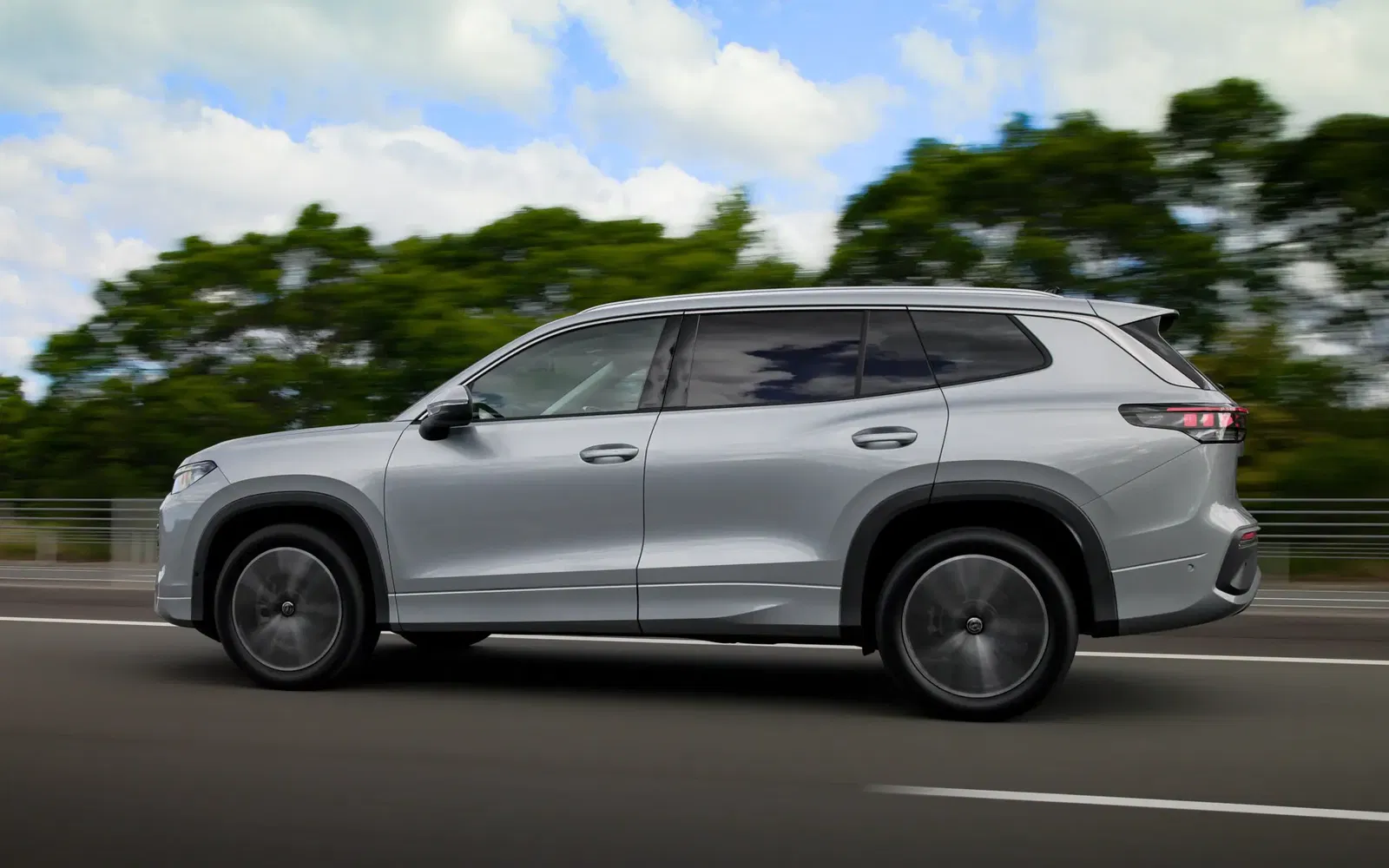
There are, of course, limits to what a big family car can do, eventually understeering when really pushed. However, once you back off the throttle and let it hook up again, the extra grunt from the larger engine gives it enough punch on corner exit.
Even on the extremely tight and technical roads around Berry, the Tayron certainly didn’t feel its size. It was maneuverable, predictable, and, even though it’s not a performance car, it was actually quite fun.
With the added capability and confidence, you notice the well-weighted, direct steering that actually offers a decent level of road texture feedback.
The adaptive suspension takes the Tayron from being acceptable on the road for a family car into something that’s genuinely enjoyable to drive.
A Little Overreactive
The Volkswagen Tayron is yet to be tested by ANCAP, although it received a five-star Euro NCAP safety rating, so you can expect it to receive the same rating in Australia.
On occasion, the ADAS safety features can be a little overreactive, particularly the Front Assist. However, the safety suite is customisable, with the menu easily accessible from the top of the infotainment screen, and once switched off, the Acoustic Speed Warning, and the Speed Limit and Road Layout response for the Adaptive Cruise Control will remain off.
Safety features on the Volkswagen Tayron include:
- Airbags (Driver and front passenger, driver and front passenger side, front centre, rear seat side airbags, curtain)
- Front seat belts, pre-tensioners & force limiters
- 2nd row outer seat belts, pre-tensioners & force limiters
- Proactive occupant protection (w/ Front Assist & Side Assist)
- Seat belt reminder
- Adaptive Cruise Control (w/ stop & go)
- Advanced driver attention & drowsiness monitor
- Area View (360° cameras)
- Automatic kerb function
- Distance warning display
- Dynamic road sign display
- Emergency Assist
- Exit Warning System
- Front Assist w/ pedestrian & cyclist monitoring
- Front Cross Traffic Assist
- Lane Assist (lane departure warning)
- Manoeuvre braking (low speed, front & rear)
- Oncoming vehicle braking when turning & swerve support
- OPS (Optical Parking System)
- Park Assist
- Parking sensors, front & rear
- Predictive speed limiter
- Rear View Camera
- Side Assist w/ Rear Traffic Alert
- Travel Assist (ACC + Lane Assist)
On the Expensive Side
The Volkswagen Tayron is offered with a five-year unlimited kilometre warranty and one year of roadside assist.
Owners have the option to choose between a three-year or five-year service plan. The three-year plan costs $1,595 for the 110TSI variants, rising to $1,891 for both the 150TSI and 195TSI. The five-year plan costs $2,910 for the 110TSI and $3,550 for the 150TSI and 195TSI.
These capped-price servicing costs are a little on the expensive side; however, they’re not outrageously uncompetitive either.
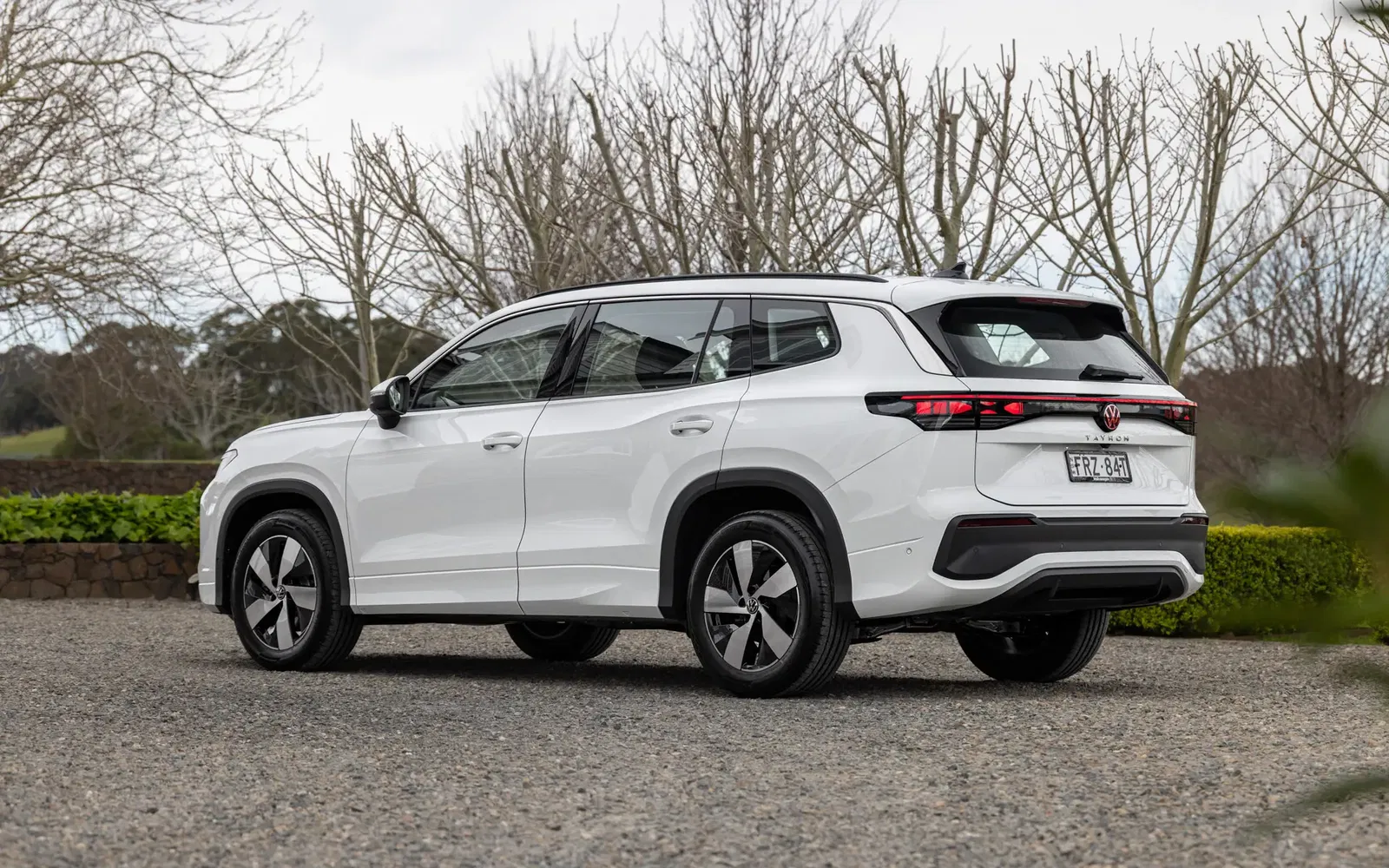
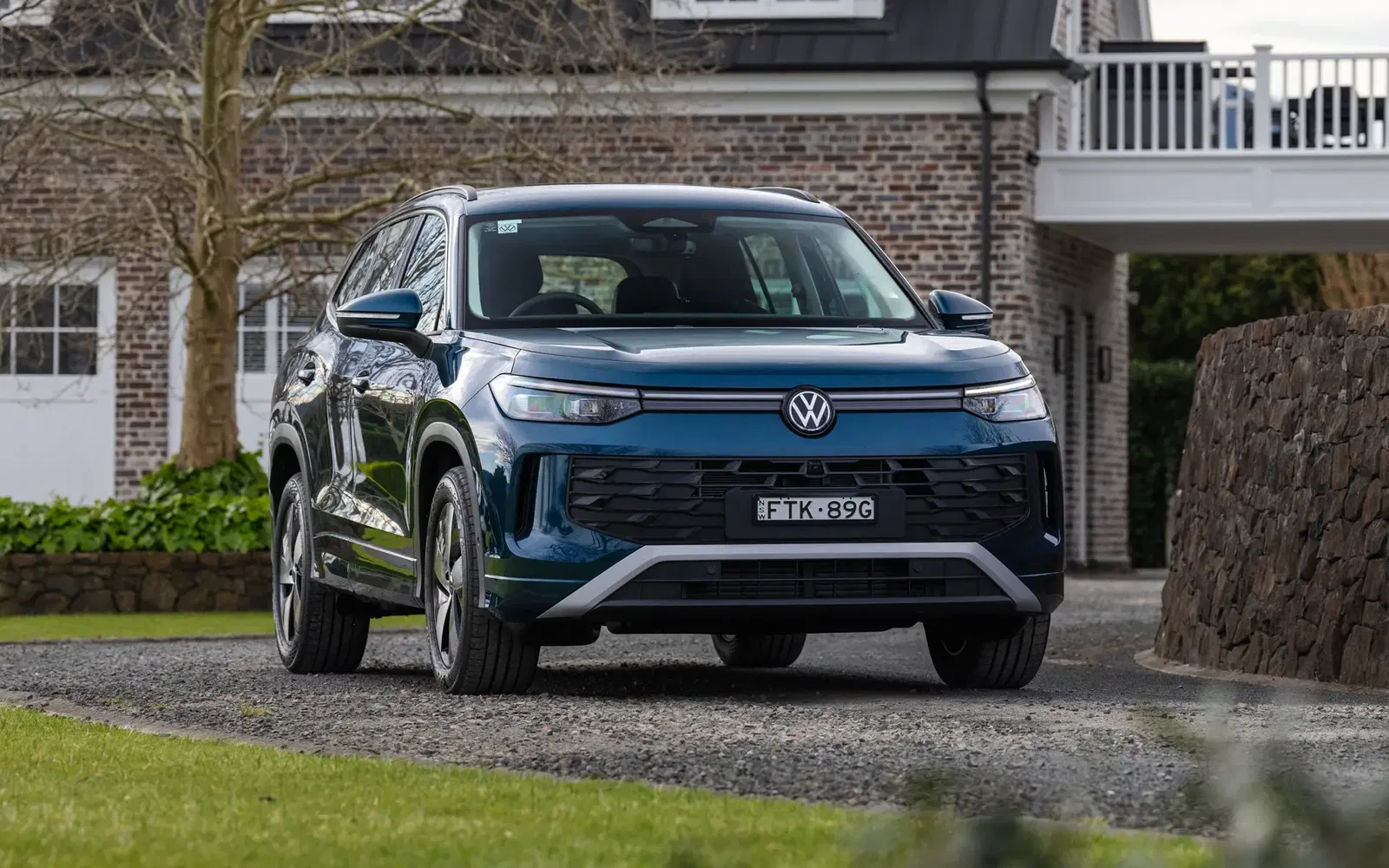
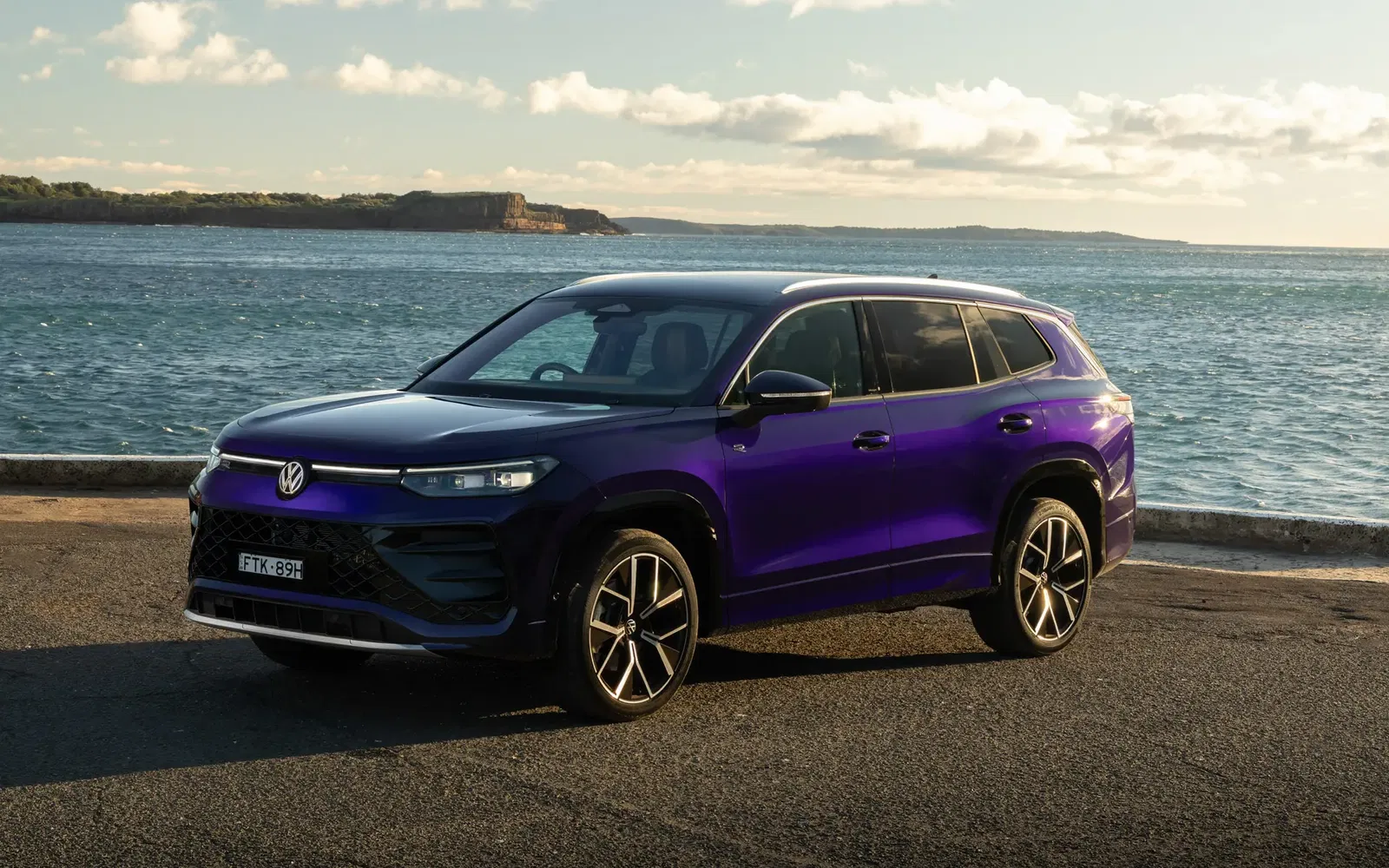
What do you get with the 2025 Volkswagen Tayron?
Standard features on the Volkswagen Tayron 110TSI Life:
- Seven seats
- Cloth seats w/ leatherette upholstery
- 18-inch alloy wheels
- LED headlights and taillights
- 12.9-inch infotainment screen
- Eight-speaker sound system
- 10-colour ambient lighting in dashboard
- Power tailgate
- Wireless chargers (x2 front)
- USB-C ports (x2 front, x2 rear)
The 150TSI adds or replaces:
- Five seats instead of seven
- Off-road driving profiles for drive mode selector
- Adaptive Chassis Control (DCC Pro)
- 4-Motion All-Wheel Drive
The 150TSI Elegance adds or replaces:
- 19-inch wheels
- Seven seats
- Chrome roof rails and chrome accents
- 30-colour ambient lighting
- Heated steering wheel
- Leather appointed seats
- Power adjustable front seats w/ memory (heated, ventilated and massaging)
- Heated second-row outboard seats
The 195TSI R-Line adds:
- R-line styling package
- 20-inch ‘Leeds’ alloy wheels
- 15-inch infotainment touchscreen with voice command
- 10-speaker Harman Kardon sound system
- Heads-up display
- HD Matrix LED headlights w/ 3D animation
- LED taillights w/ 3D animation and dynamic indicators
- Progressive steering
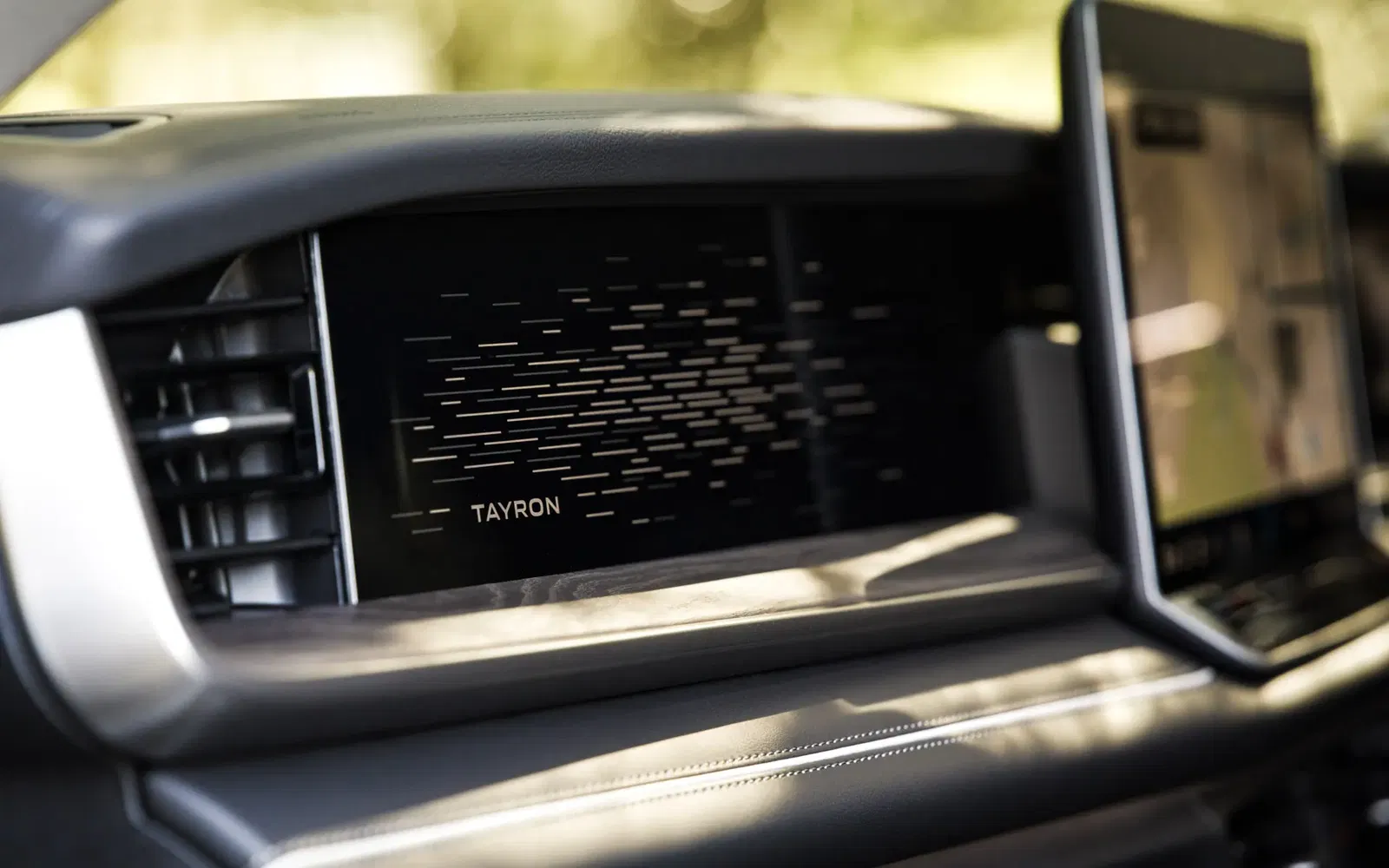
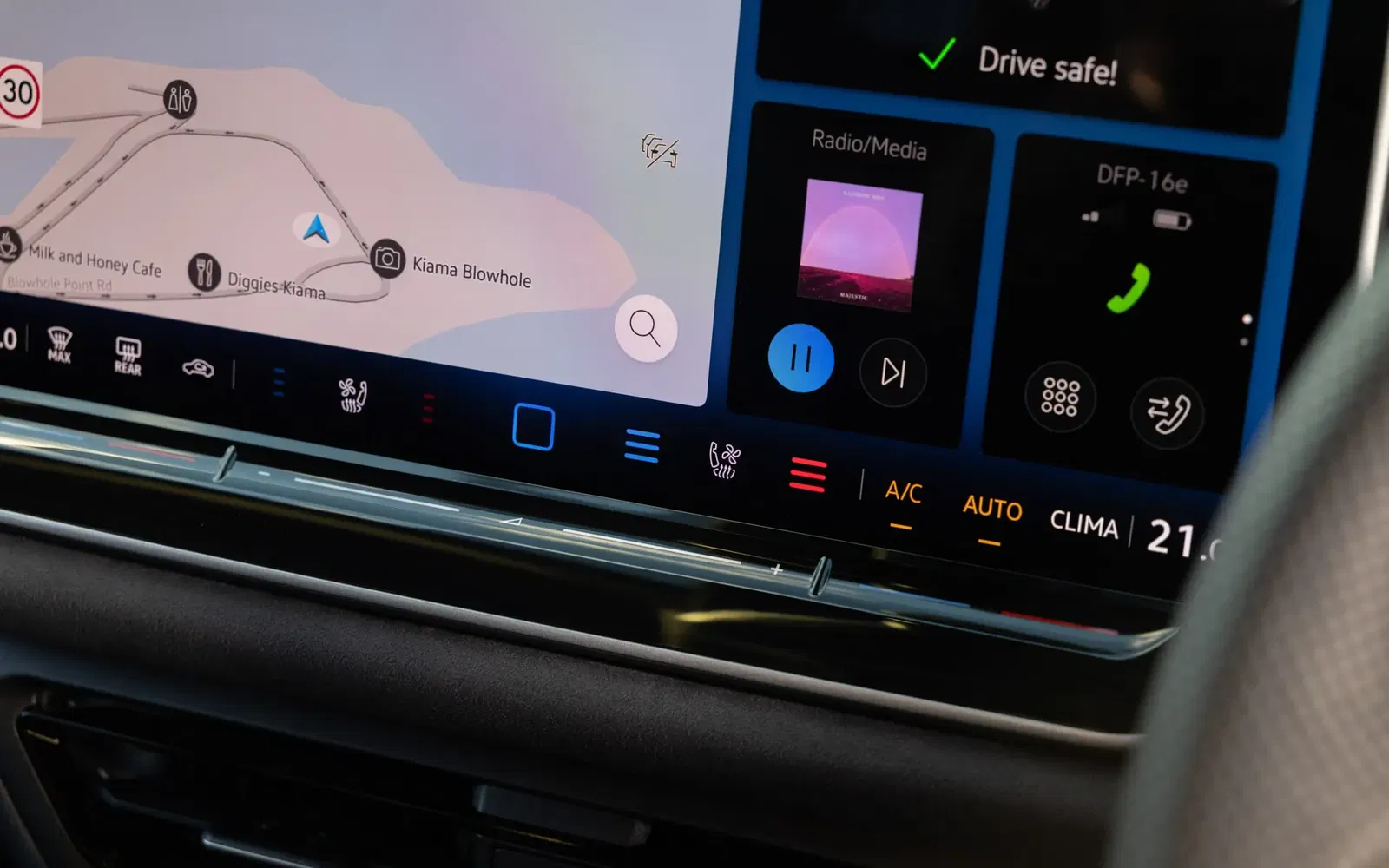
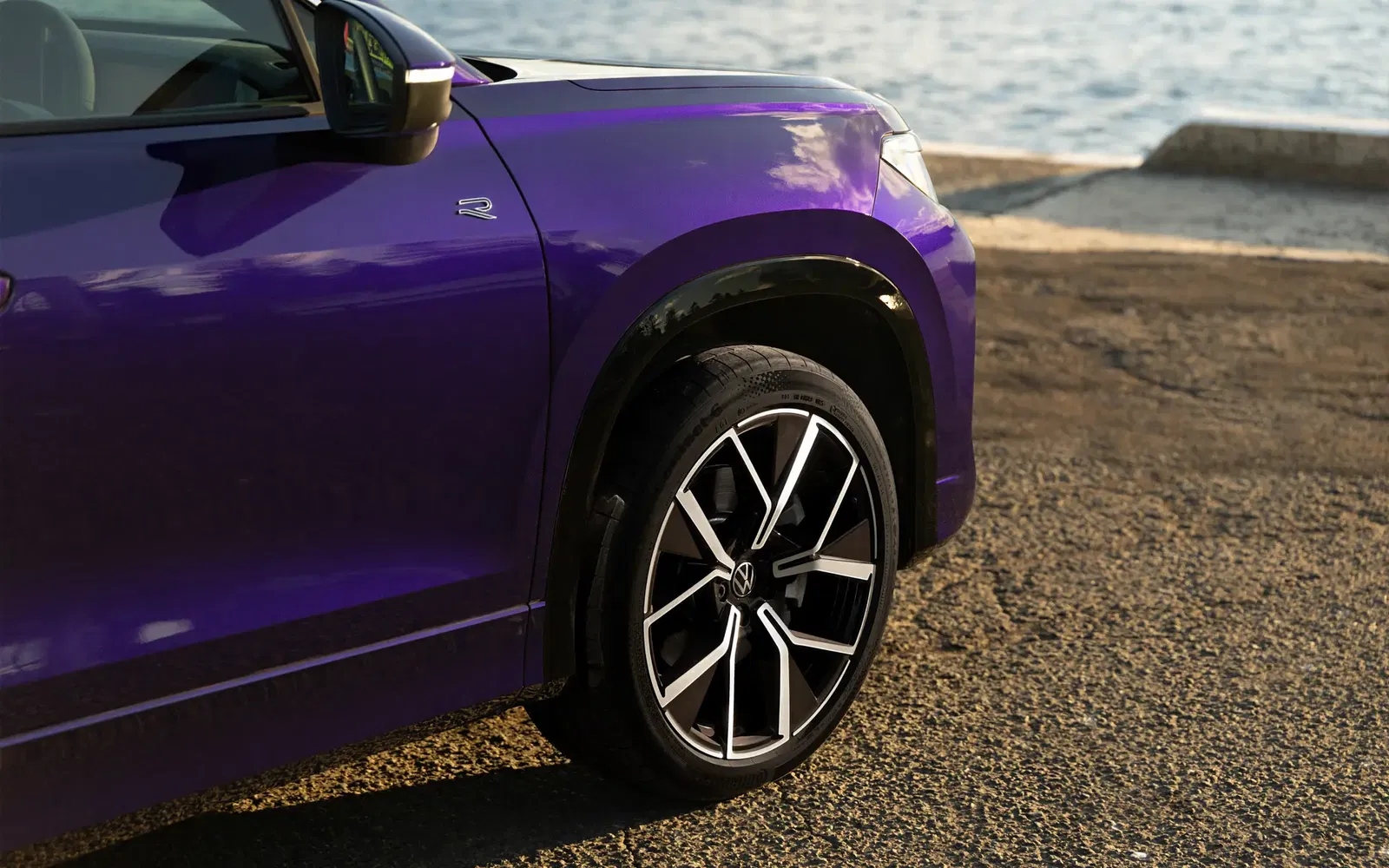
Final Thoughts
While the 110TSI grade leaves a little to be desired, the 150TSI variants of the 2025 Volkswagen Tayron in particular are very accomplished vehicles, offering excellent space and practicality, equipment, comfort, and driving dynamics.
While it isn’t the cheapest to buy or run for an SUV offering of this size, and its engine output figures can’t quite match some of its rivals, there’s very little about the Tayron that leaves you feeling short-changed.
Choose the right spec (and I believe that’s the 150TSI Elegance), and the Tayron presents itself as a very complete package, offering a lot for a family SUV.
Saucey rating breakdown
Saucey rating breakdown
FAQ
Sign up to our newsletter
Be the first to know when we drop new car reviews.
.avif)

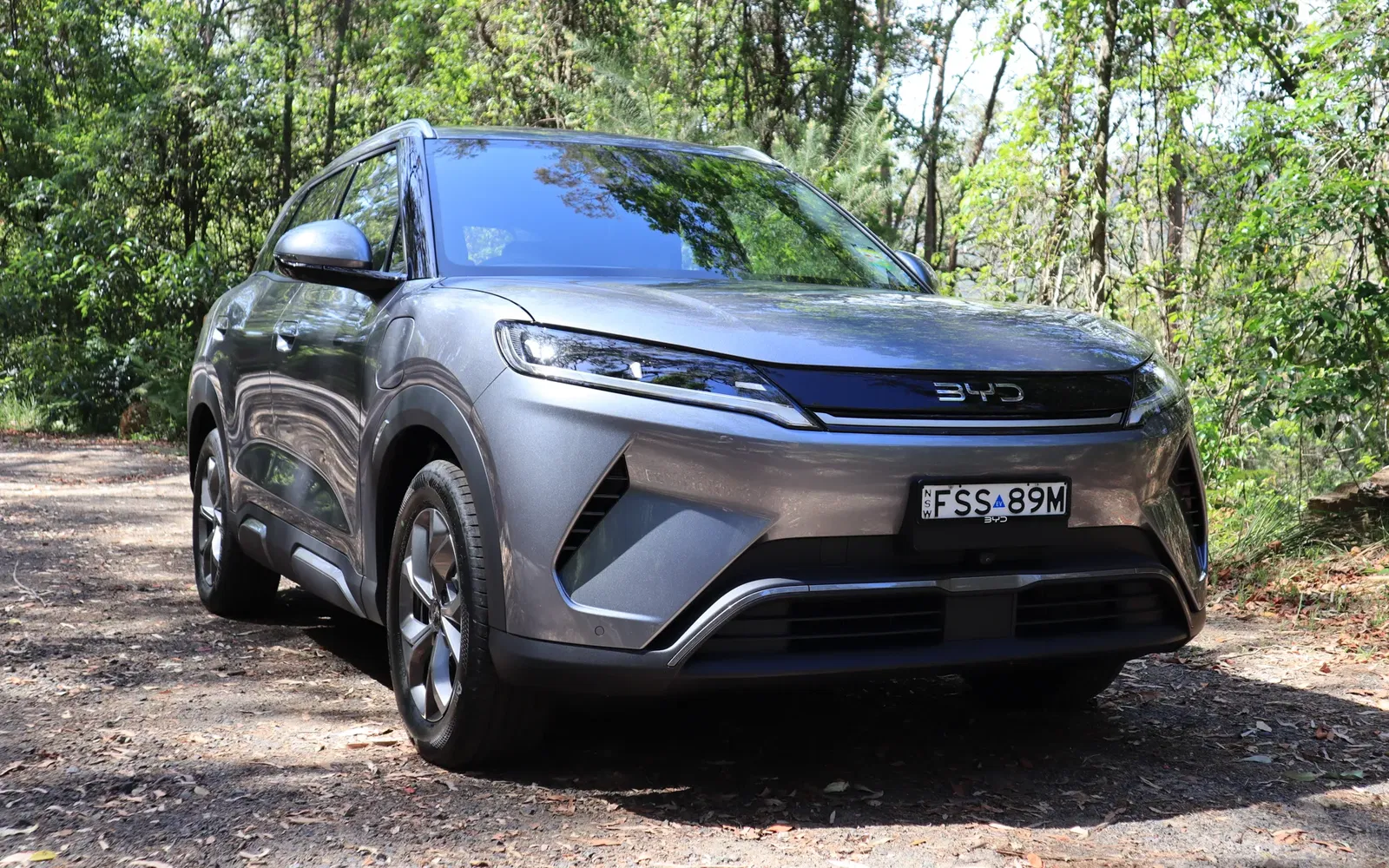

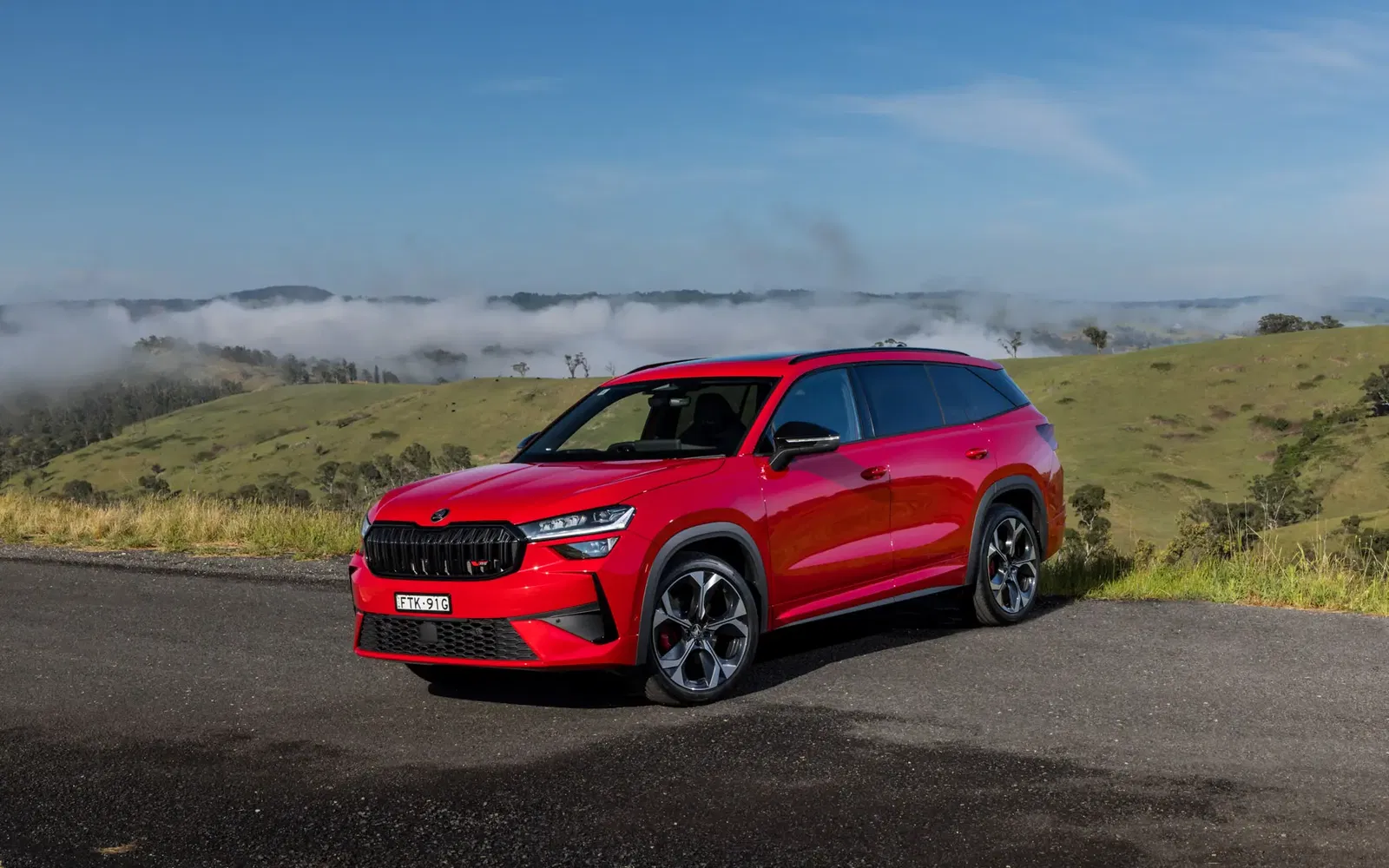
%20Calligraphy%20-%2003.webp)